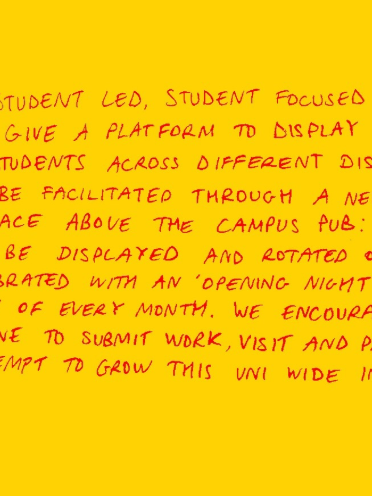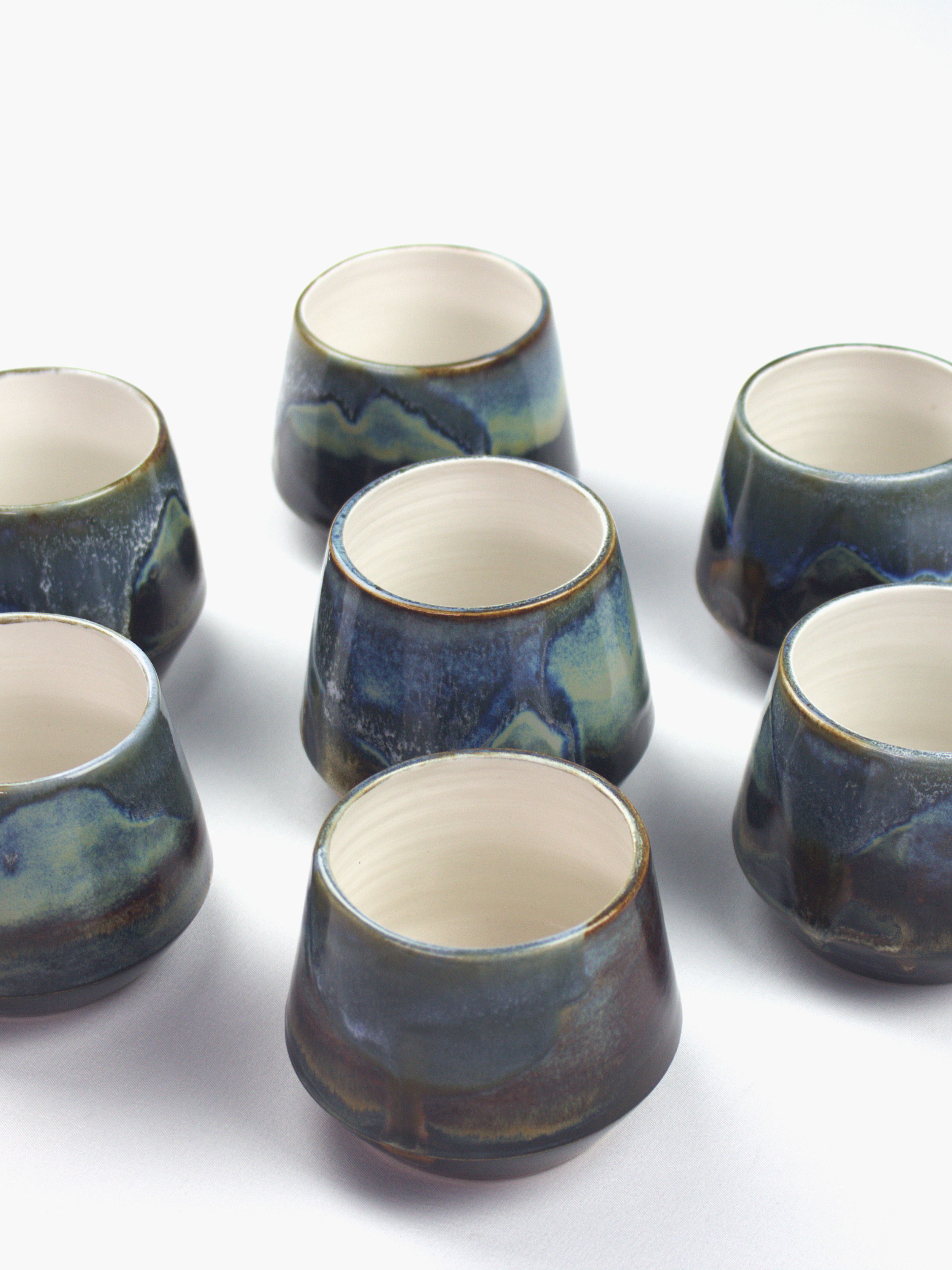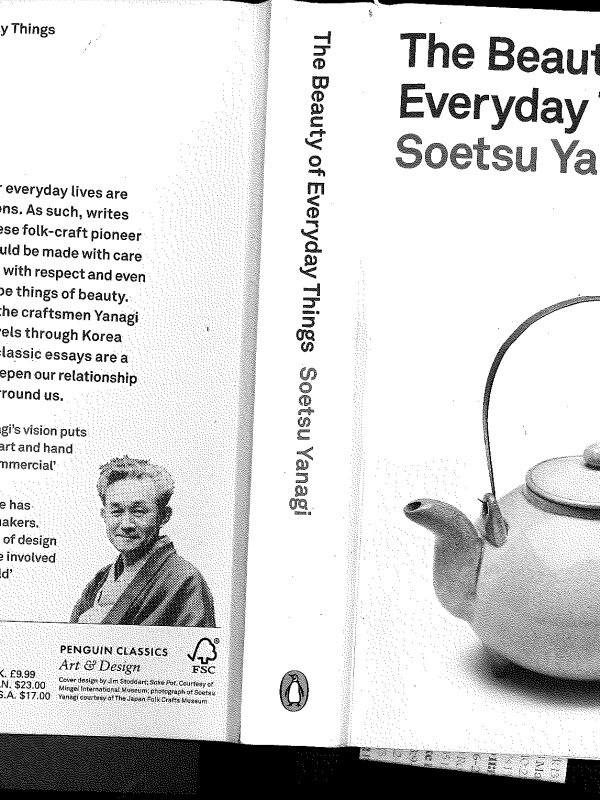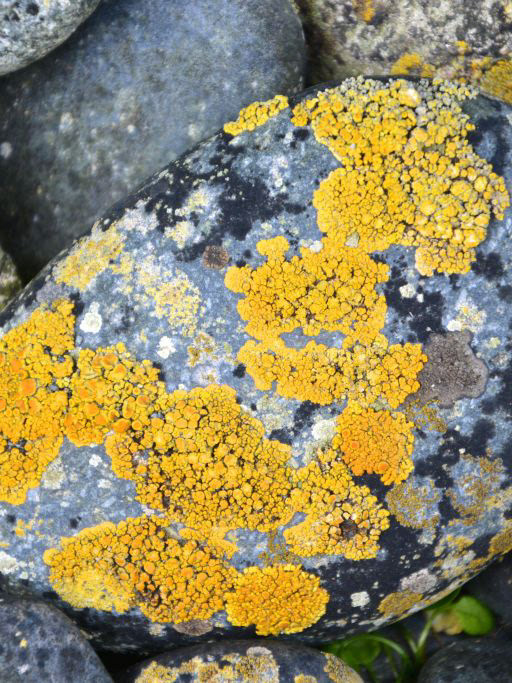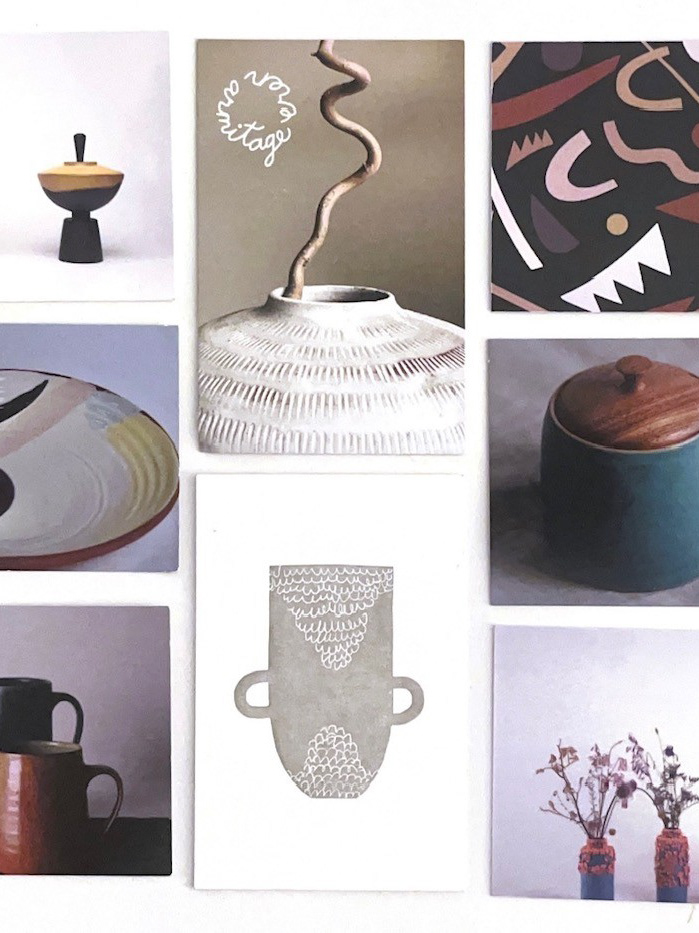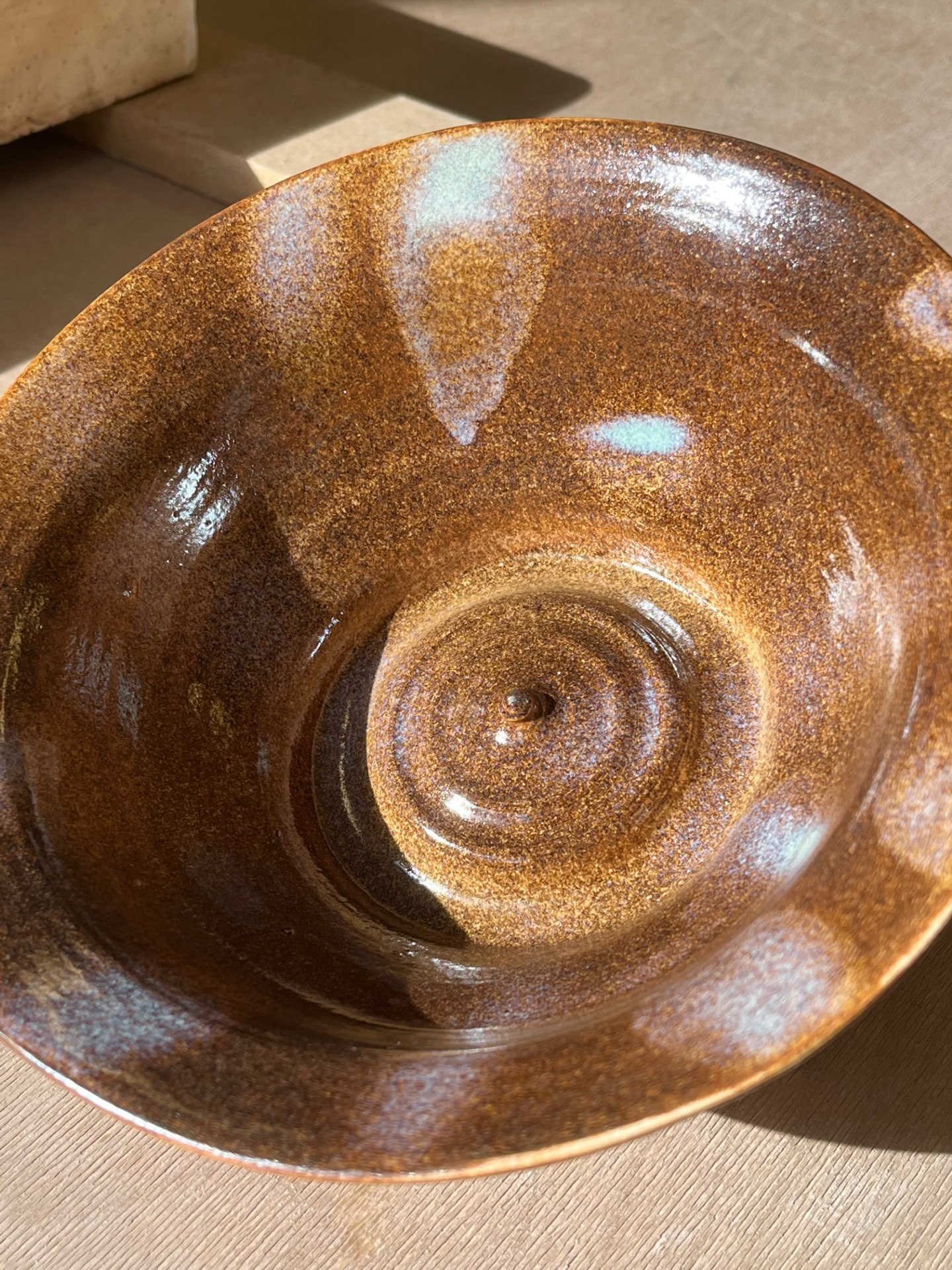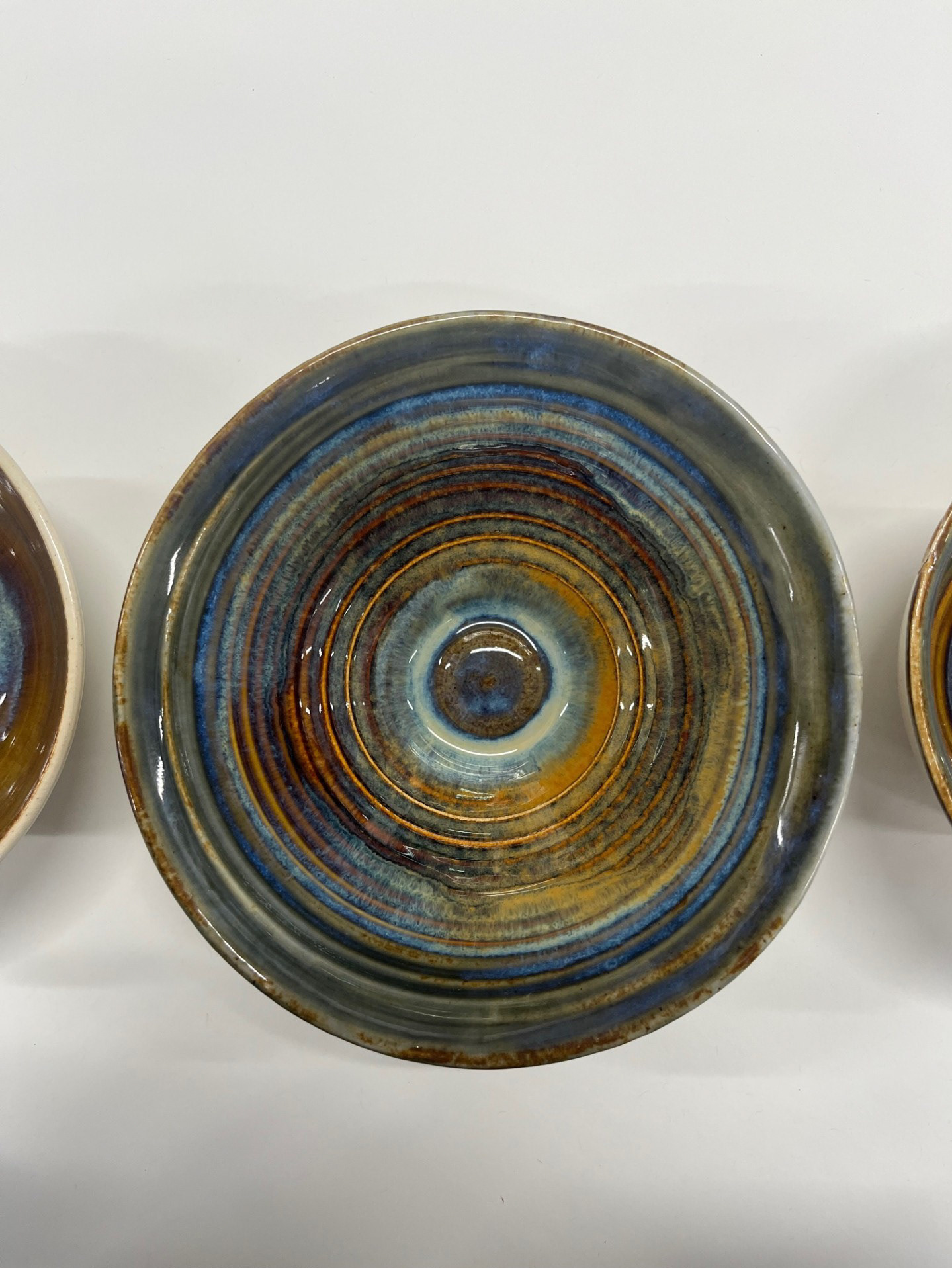In second year, I made massive strides in terms of my personal practice. I was able to understand what drives me and Put into practice what was learnt during the 2nd year module, Understanding context. I concentrated on pulling inspiration from organic influences and focused on primarily surface design. In terms of development, there are a couple of aspects that I knew I wanted to expand on for my final year, those being : Continuation of research into organic influences, maintaining relatively simple forms focusing on repeatability and developing on the idea of colour, surface and glaze exploration.
Going into the summer, one aspect of ceramics that I love but hadn’t explored before was vintage pottery. To dive into this, I took a trip to an antiques emporium in my local area, Levenshulme. When I arrived, I was instantly drawn to an area that was filled with amazing tiles from various designers and decades. In a superficial manor, I am drawn to pieces that have striking aesthetics before anything else., hence why I experienced an instant attraction as soon as I arrived. See below for initial images:
Pilkington's Royal Lancastrian Pottery and Tiles
Pilkington’s was a ceramics manufacturer and was an influential pottery company that was established in 1892. This company pioneered the ceramic industry by introducing a wide range of new and unusual types of glazes for its time. Pilkington's pots originally caught my eye because I love the rounded forms and bold colours. The main thing that spoke to me was that they were striking and unique, but they still looked like they were part of a cohesive family of work. Emphasising my love the simple elegance that they adopt as well as their variety of shapes and forms.
See below for initial inspiration - Scans from 'Pilkingtons Royal Lancastrian Potterry and Tiles' By AJ Cross:

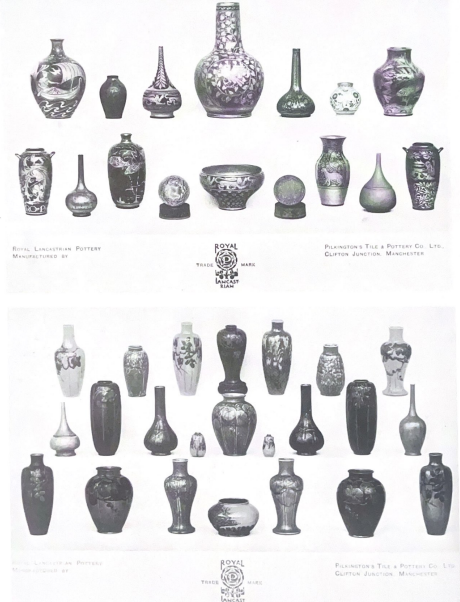

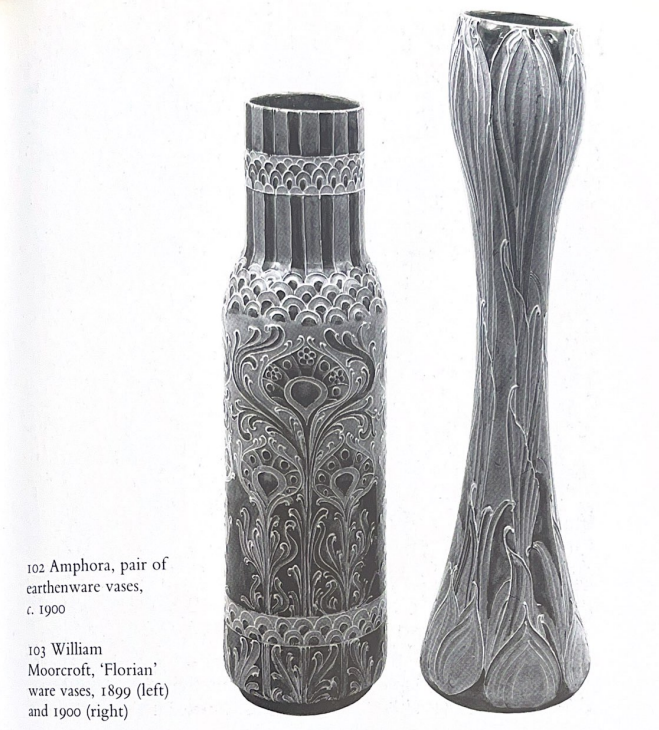

Possible Glaze choices/ Inspiration:
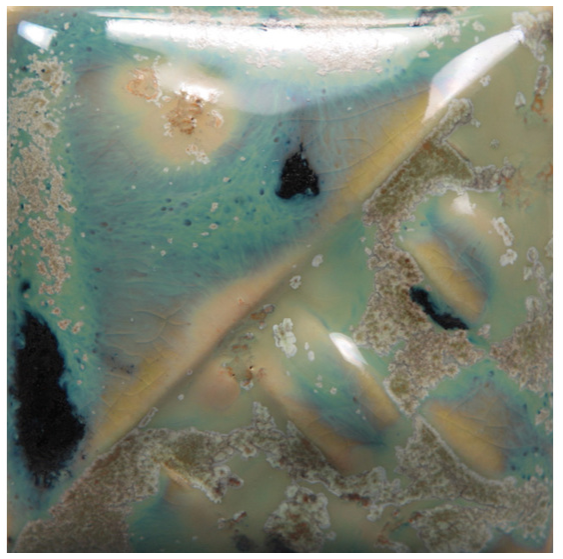
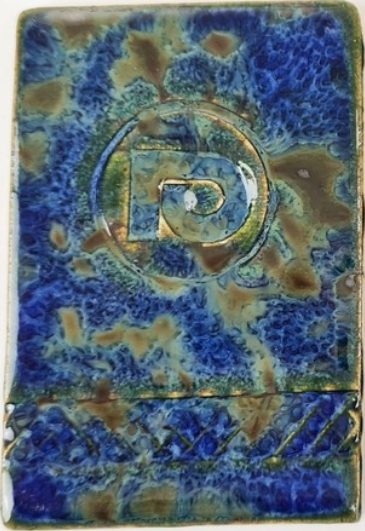

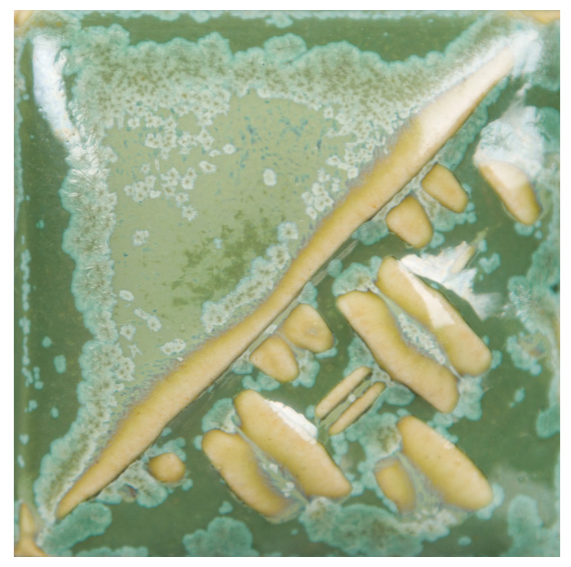

L6 Proposal: Feedback and Reflection
Upon reflection, with the help of the feedback form the presentation, I was able to understand that the idea that I originally had involving art nouveau ceramics lacked much depth. Although I may still draw basic inspiration form Pilkingtons Royal Lancastrian Pottery and tiles as well as artists such as Raoul Lachenal, I think that I need to take a step back and really understand what drives my interests as a maker.
I soon realised that as a maker, I needed to build a much stronger narrative by looking deeper into why I like things like this. Initially I tried to think about my experiences in life and the things that I was surrounded by throughout childhood. As a child I always loved nature because it was always such a stimulating place full of wonder and wildlife; however it could also be a place that was so calming and soul centring.
To figure out what drives my practice, I realised that the best way for me to do that was to head straight into the studio. After completing the L6 Proposal presentation, I was struggling to think about what really drives my practice and I really couldn't wrap my head around it. I later came to the realisation that I ideate through making and making is one of the main things that drives me! The freedom to create without the need to explain or articulate your thoughts, letting your hands express what words cannot. A pure, instinctive flow where your ideas come to life through the act of making, allowing the work itself to communicate your inner vision. As a person, I’ve often struggled to process and articulate my thoughts and ideas, largely because they often feel unclear, even to me. It’s difficult to express something when I’m still trying to make sense of it myself; However, making allows my to explore and decode what goes on in my brain so that I can unlock every part that it just waiting to burst out. Creativity is something that we should never inhibit and for me, the best way to let my creativity flourish is to just make. I think that making is such a beautiful thing because I often struggle to put my thoughts into words but ceramics gave me an outlet for my brain because it can come through my hands instead.
Going into this initial making process, I didn't want to put pressure on myself because my main aim of this was for me not to think and just do. I have decided to take this approach because I think that this would be the best way to figure out what makes me happy as a designer; figure out what unconscious creative processes fuel my making so that I would have a pure and authentic starting point. I also felt like completing this was necessary because I wanted some time to refine my practice to ensure that there was limited pressure when it comes closer to actual submission.
Although I wanted this to be a natural process, I did have a couple of aims going into this process, one being that I wanted to throw on a larger scale because I feel like it is an area that would level up my practice. The other was that I wanted to take my time and develop my personal processes with the aim of increasing refinement and repeatability.
Initial Making:
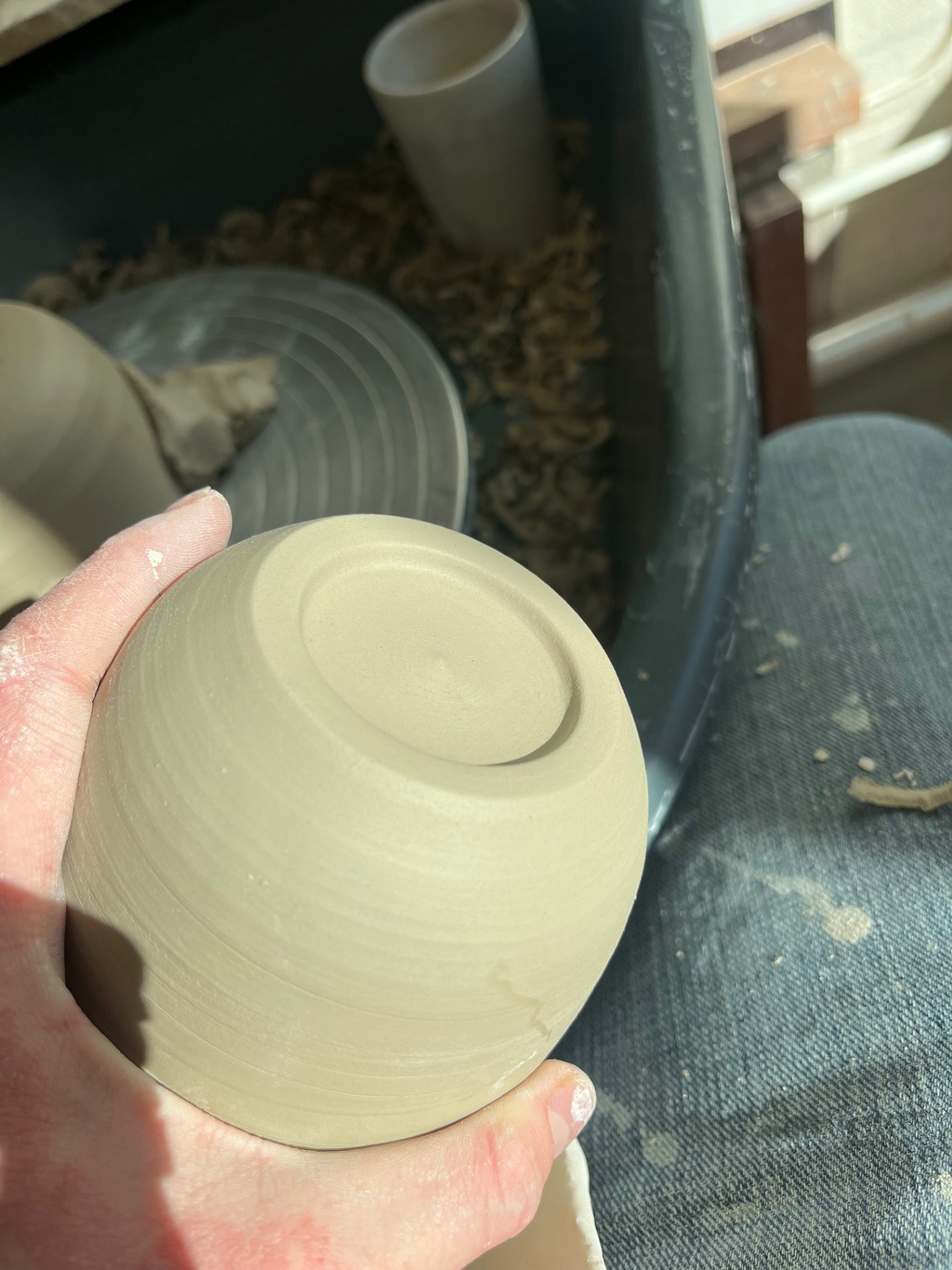
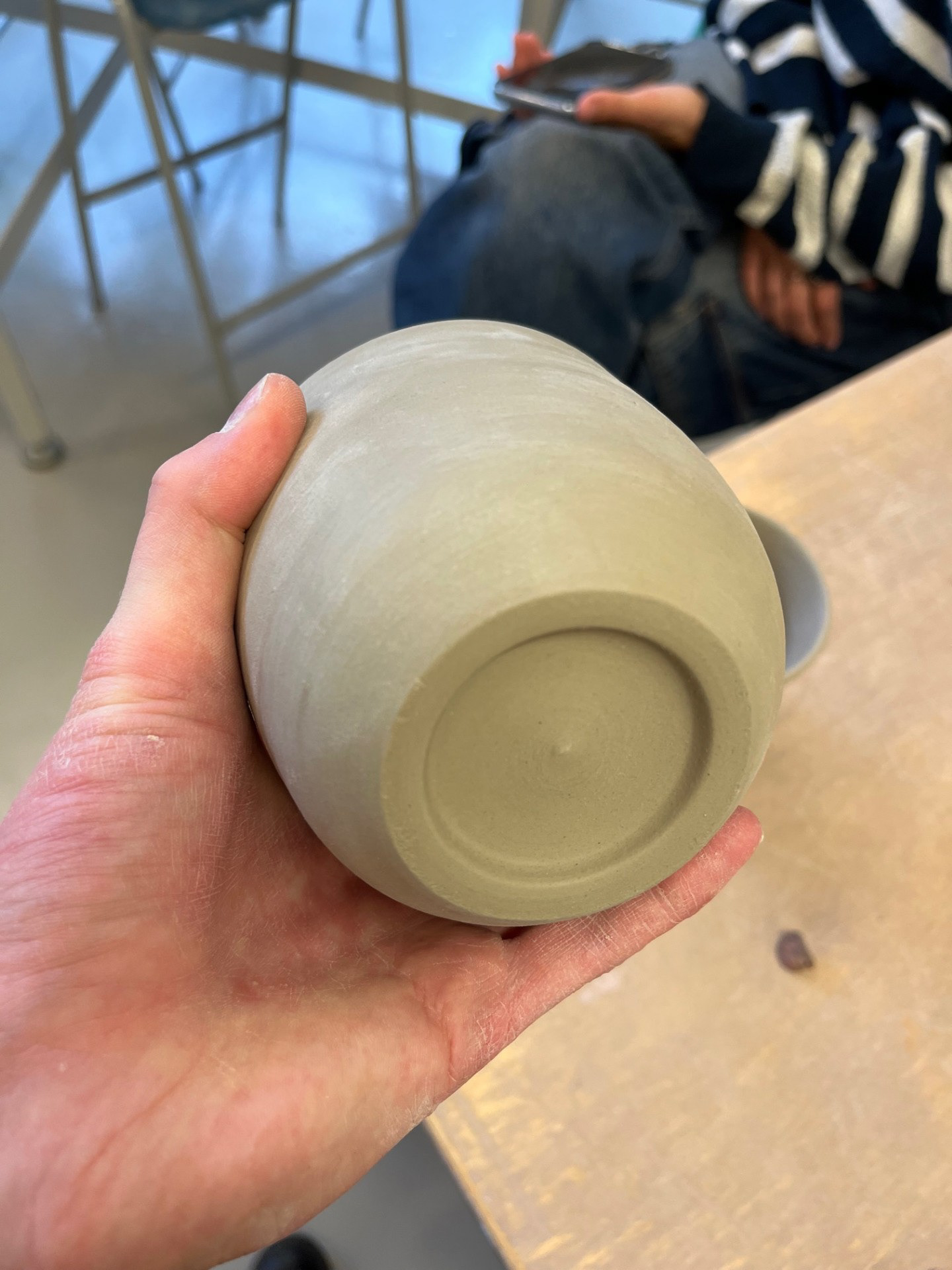
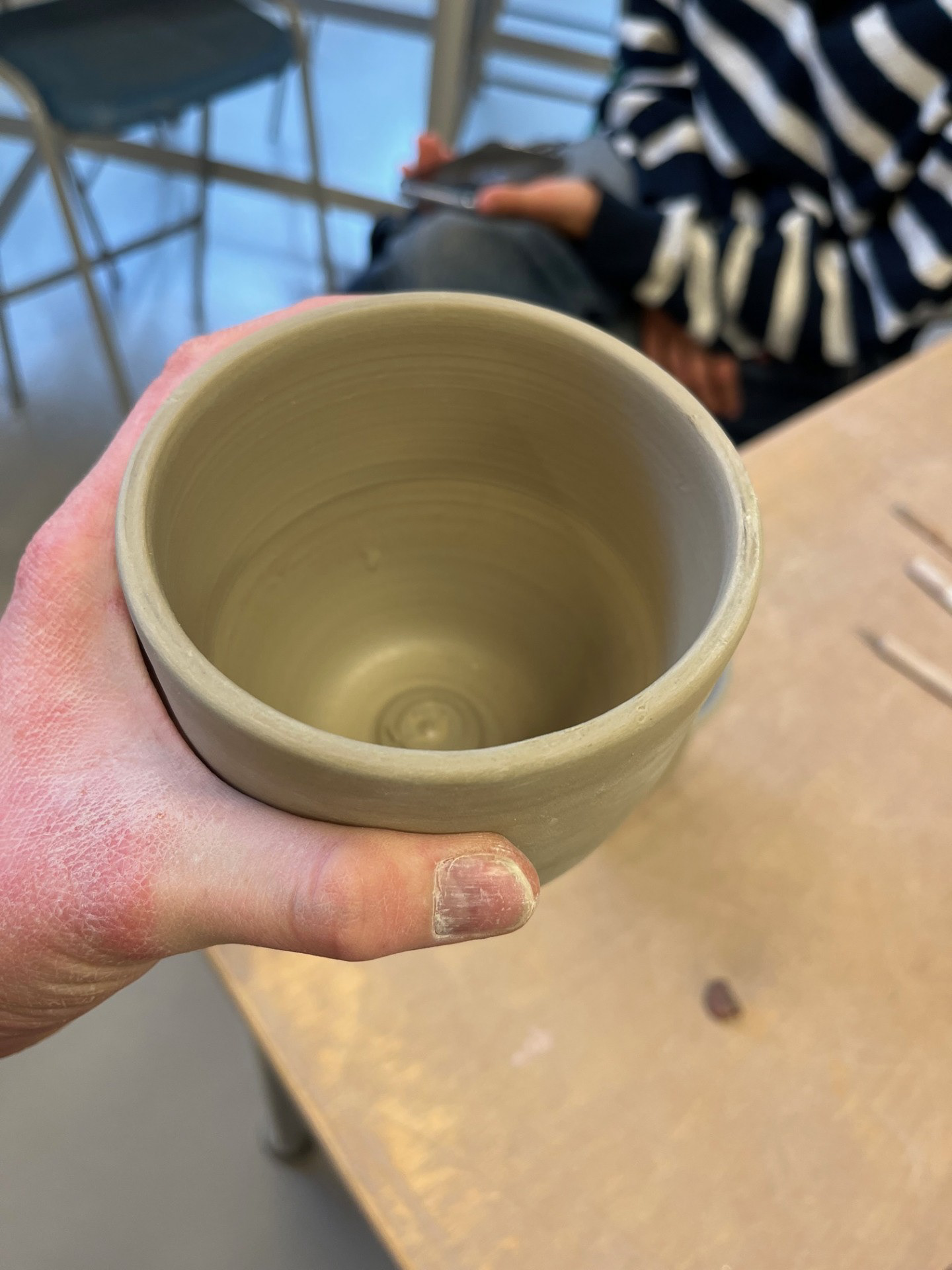
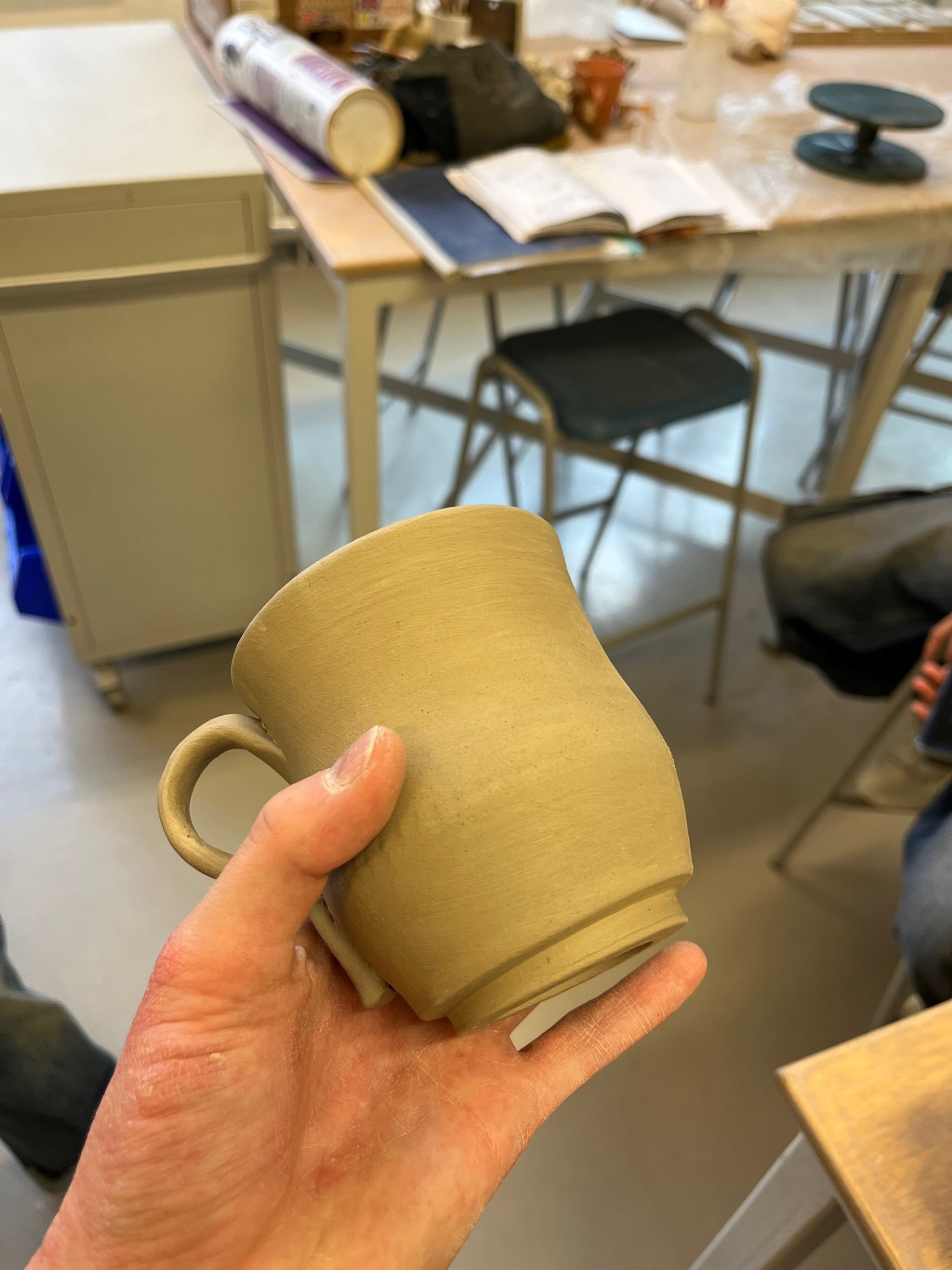
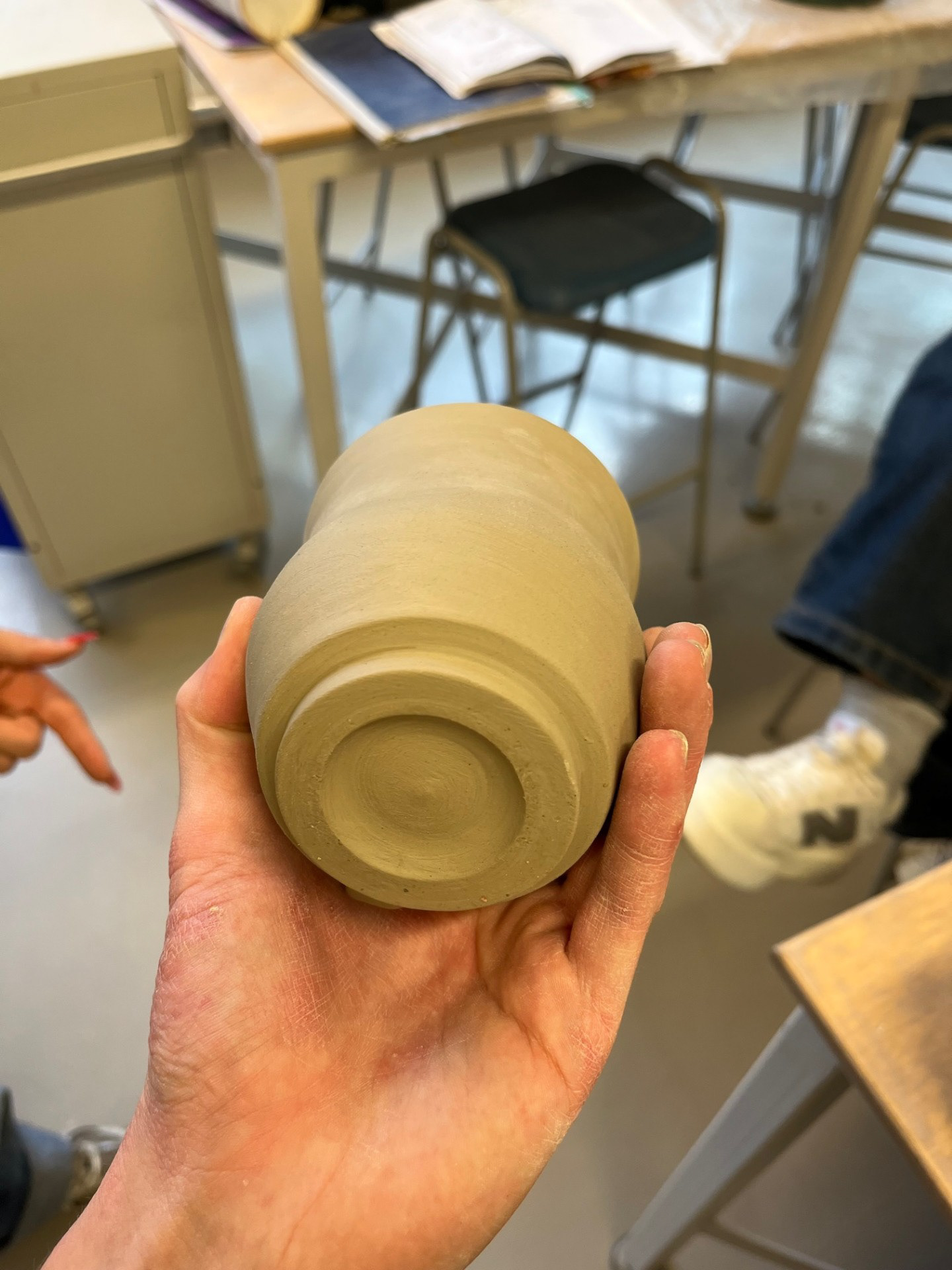

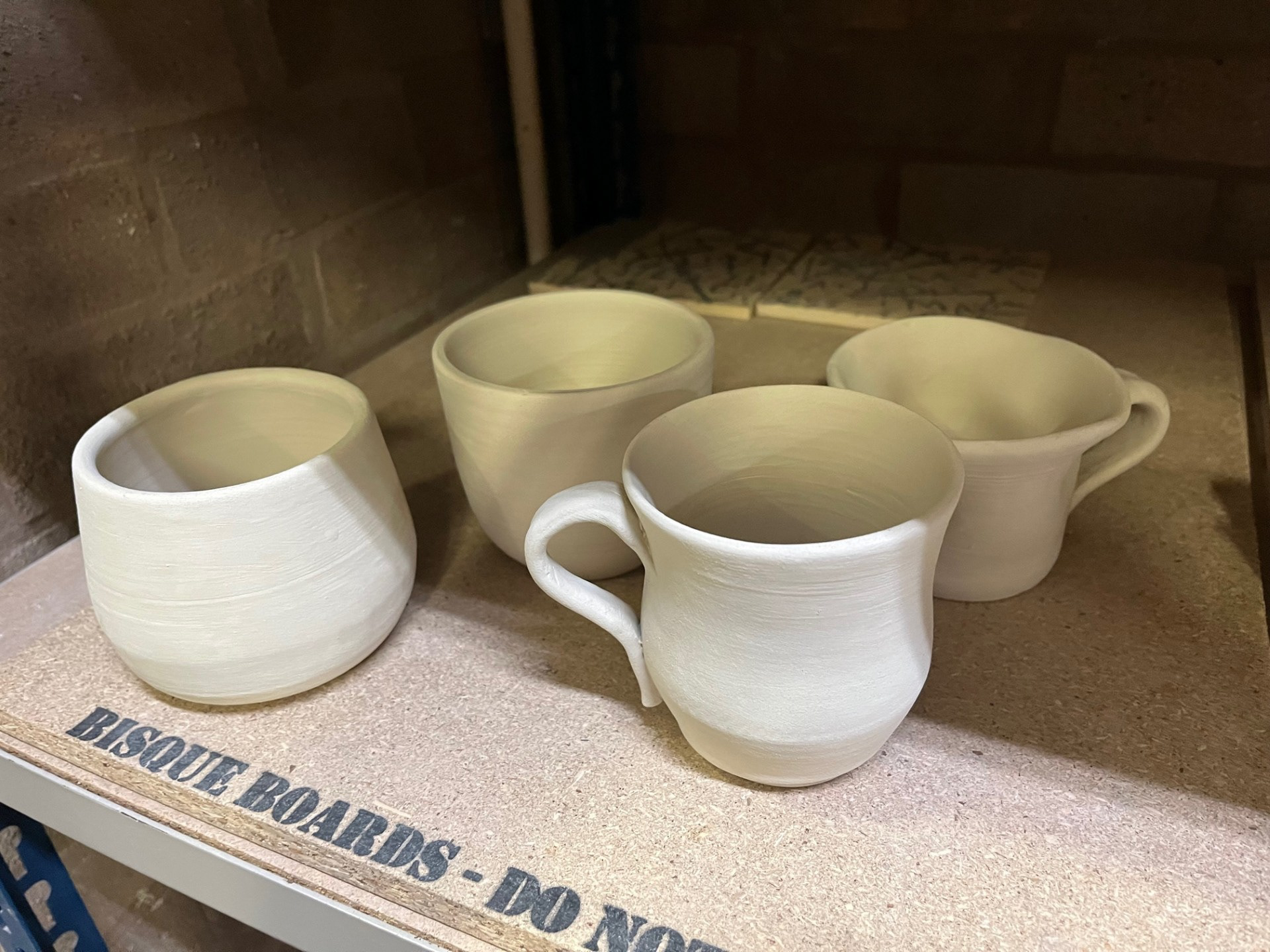

When I am throwing on the wheel, sometimes if I'm trying to make a vessel, it can go wrong. Perhaps if I didn't centre it properly or if I didn't make the walls a consistent thickness. Although this process is very out of control, unplanned and unrefined, I have always had quite a strong affinity for them (hence why I have always kept them). I am fascinated at the idea that such an unplanned and uncontrolled process can create something with such elegance and beauty.
Clay begins as a fluid and mouldable material and goes through various states for hardness to get to the point where it is fired. This process made me amazed as it was created during a very fluid state, however even throughout the hardening process, it still looks like it could move at any moment, for example if placed in water.
For both of these samples, once I threw them, I loved how they looked however they weren't very structured so I decided to place them in dish shaped plaster moulds. this was my first time trying plaster moulds and i was actually very happy with the outcome. This also potentially added a controllable and therefore repeatable aspect to these style of pieces which is something that i could develop and continue for future sampling.
For the sample on the right I used the same process of placing it into a plaster mould however i experimented with adding something around the edge of the piece. I was inspired to do this because the form on the side of the dish naturally formed when I trimmed the top off of the mug whilst throwing. I really admired the look but I primarily liked the natural, organic and unexpected occurrence of the form more than anything. Overall, This is something that I would like to expand on further during my material testing and development process.
Experimentation with stacking pieces:

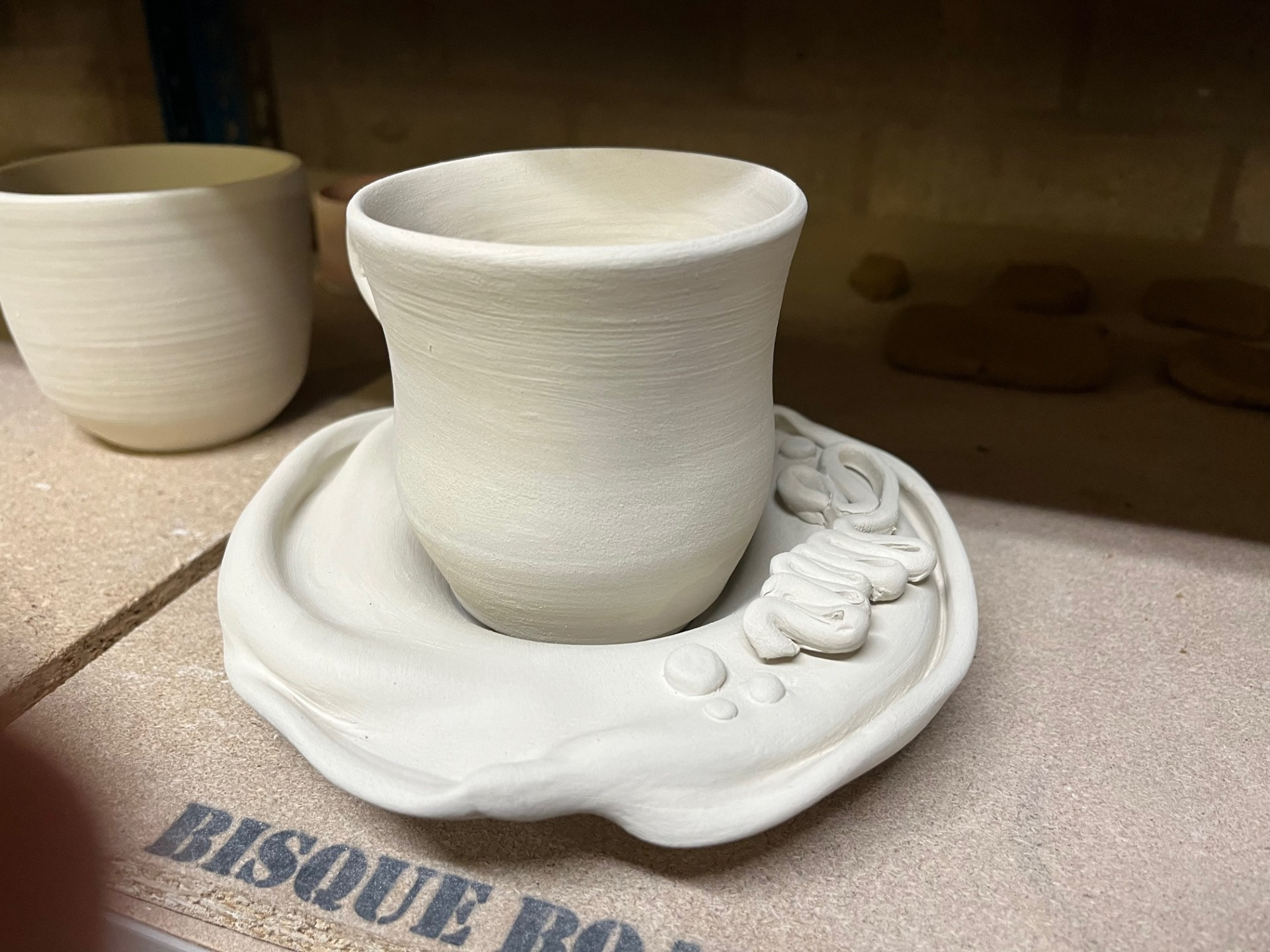
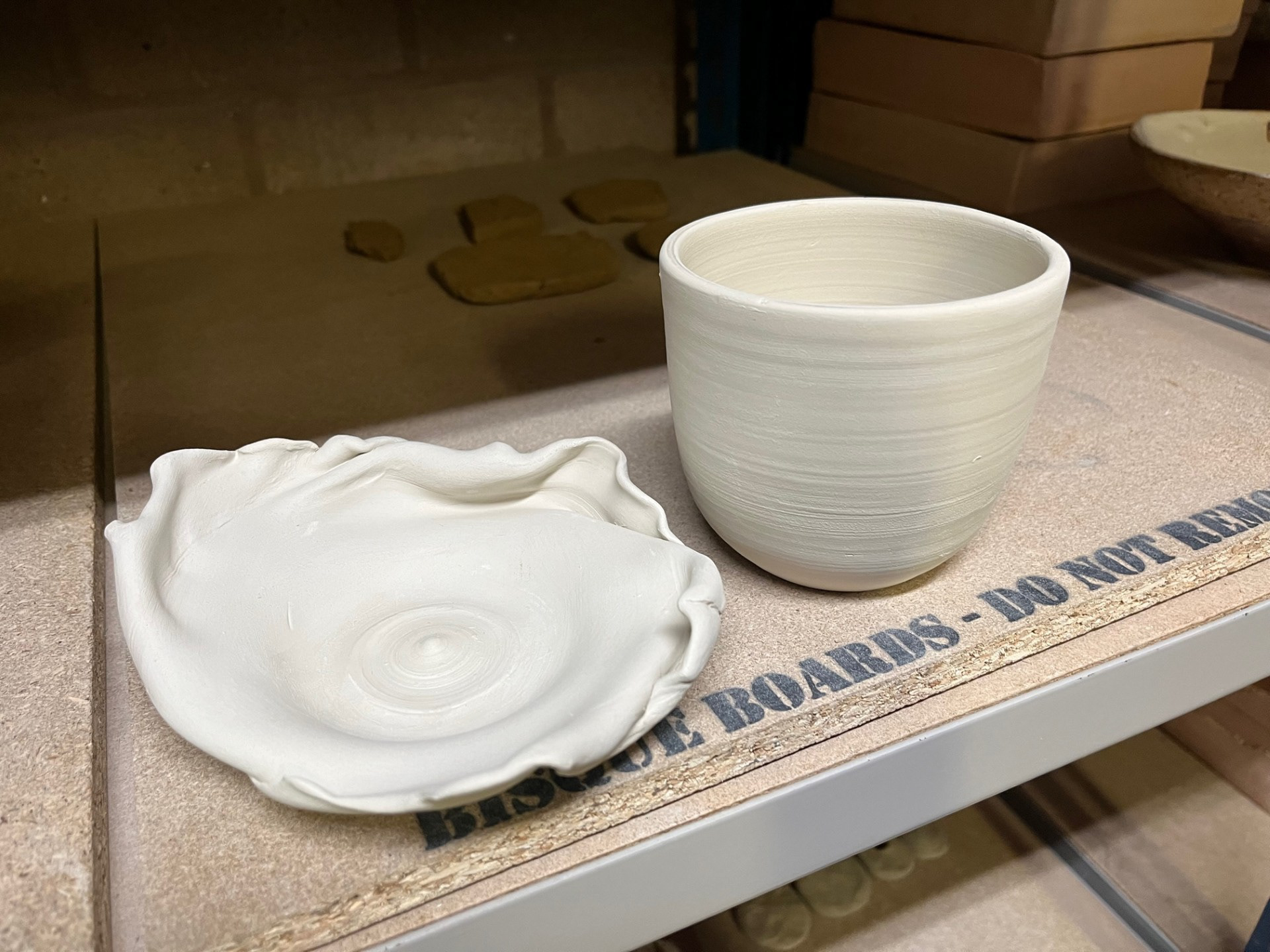
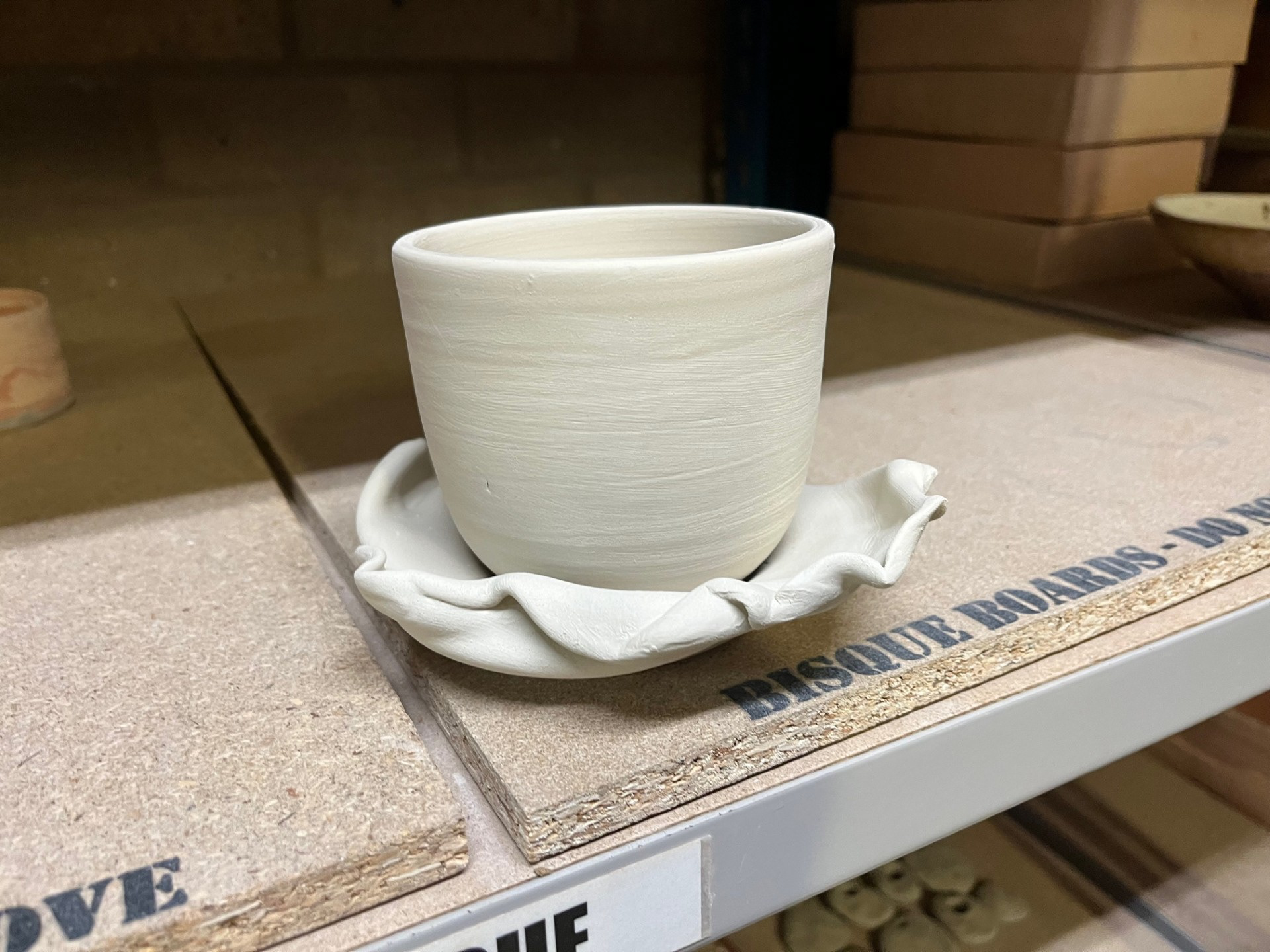
Reflection after first round of making:
Initial Sketch from Making Process
Refined & Developed Idea
Further Practical Development:
Looking at natural organic forms that occur during the throwing process as a product of trimming my piece while on the wheel. The half on the left occurred naturally and the half on the right were pieces trimmed off the top of the mug and then formed by me - inspired by the earlier sample featuring the organic form on the dish.
Below are forms made from left over clay after trimming the top of my pots during the throwing process. These forms were made by hand:
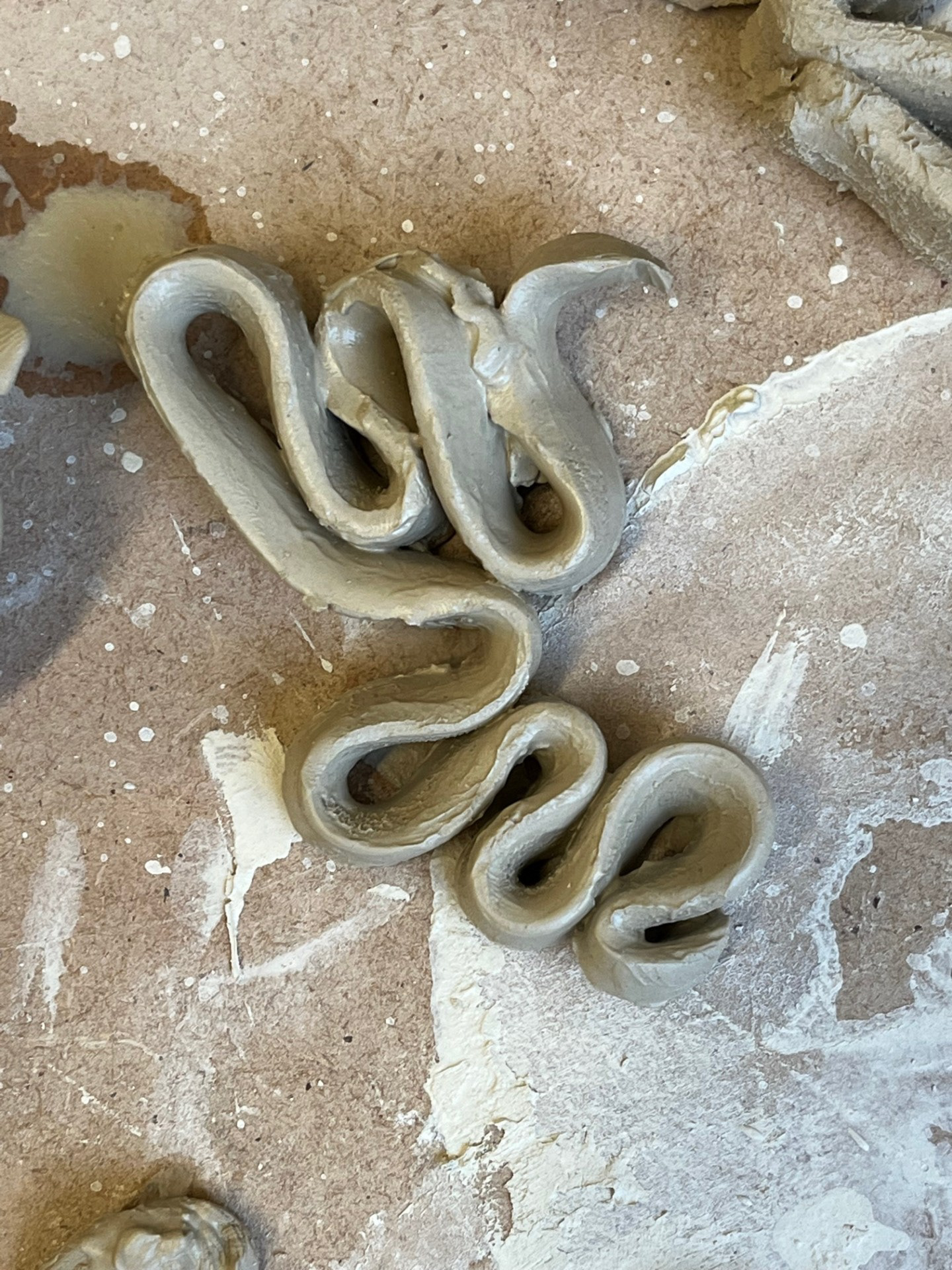
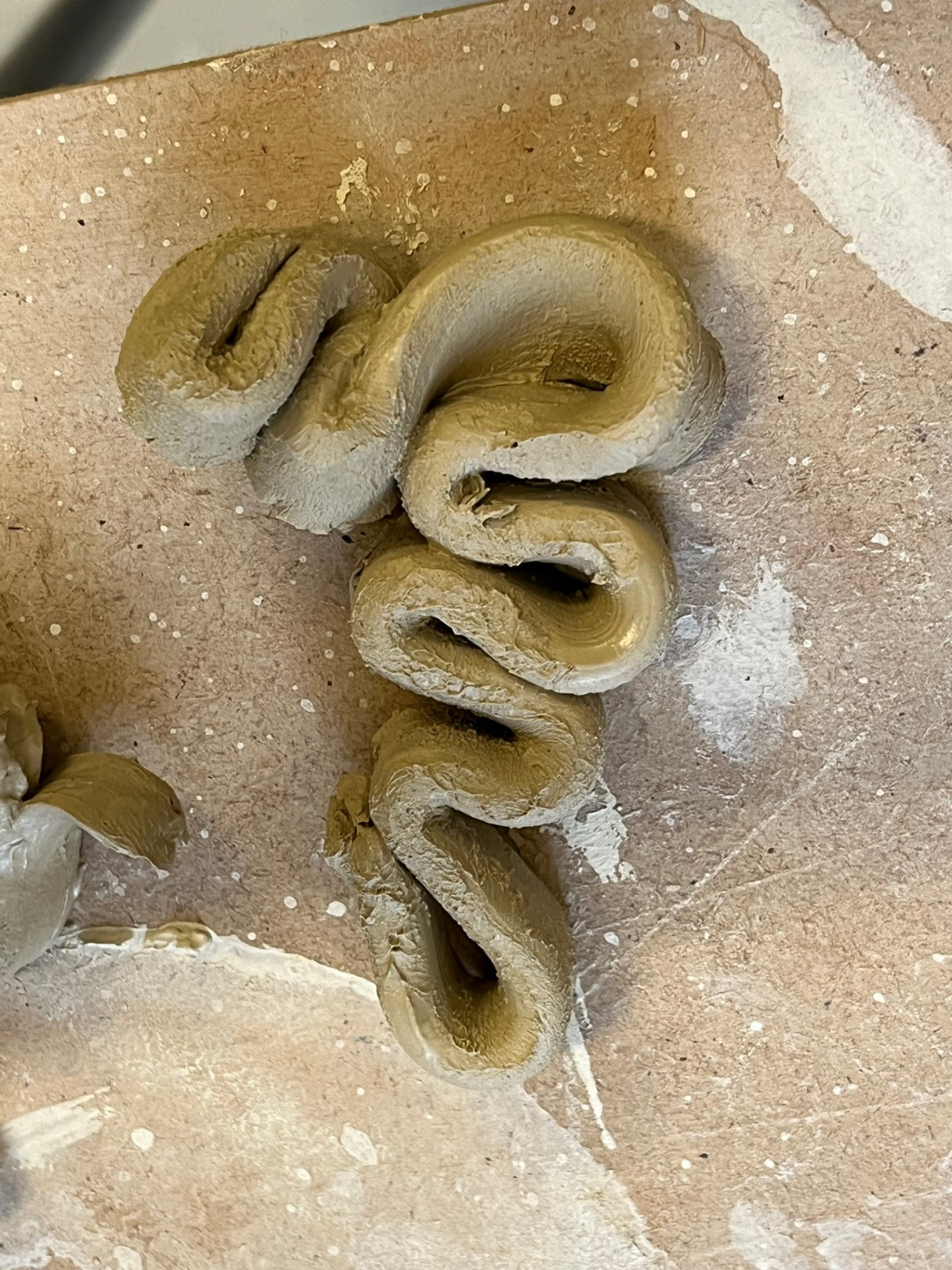

Natural forms that occurred through the process:
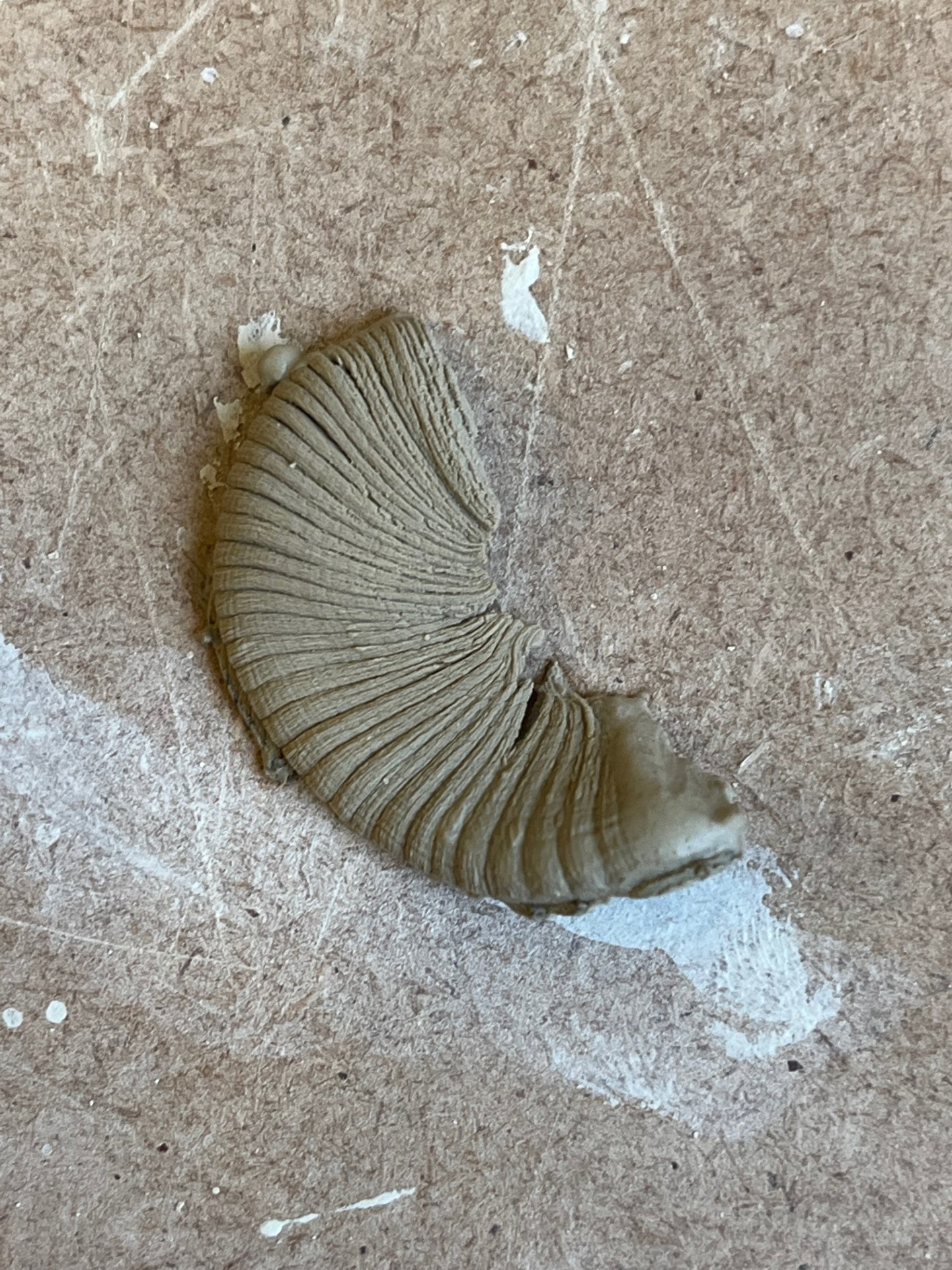
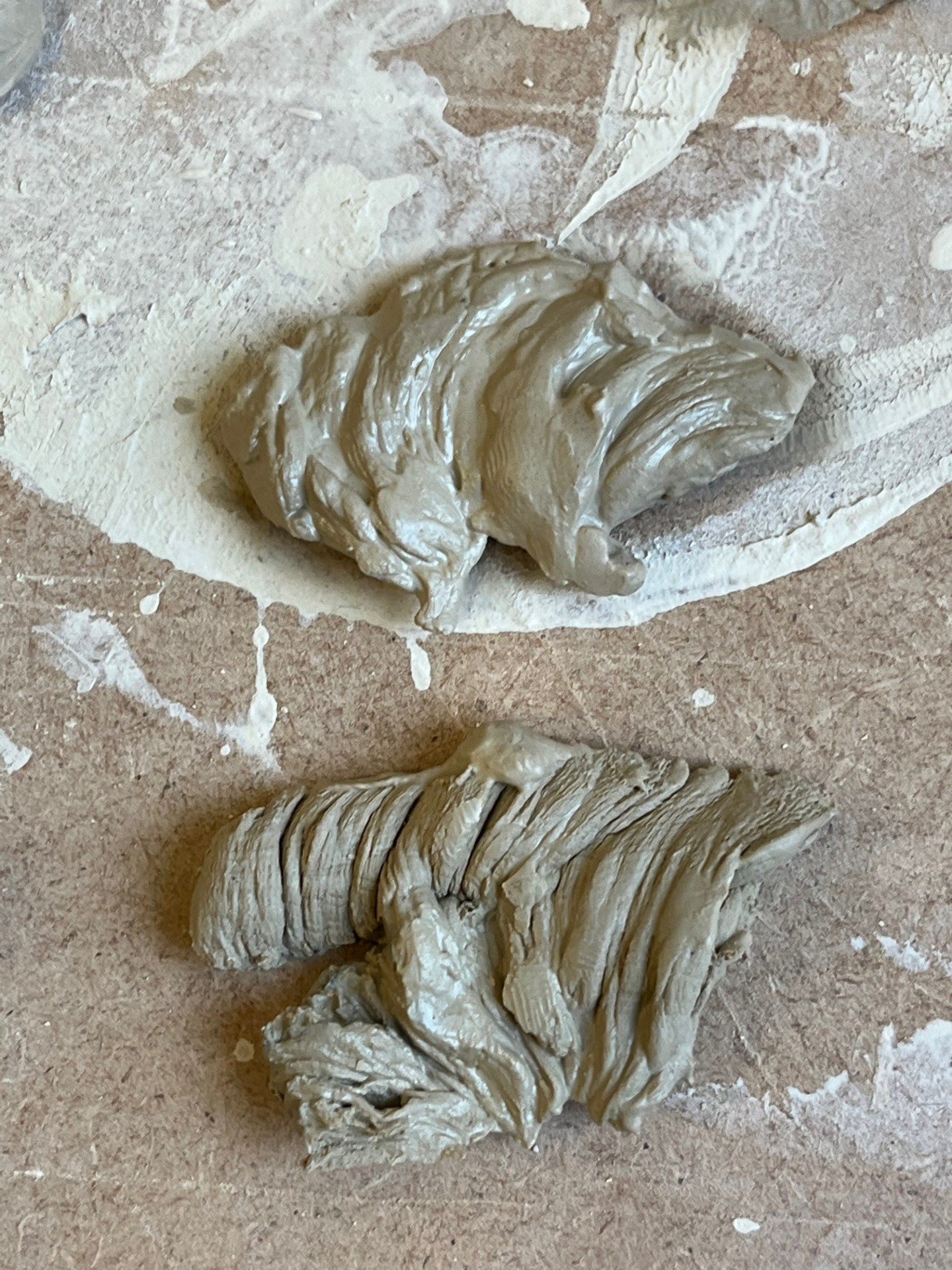
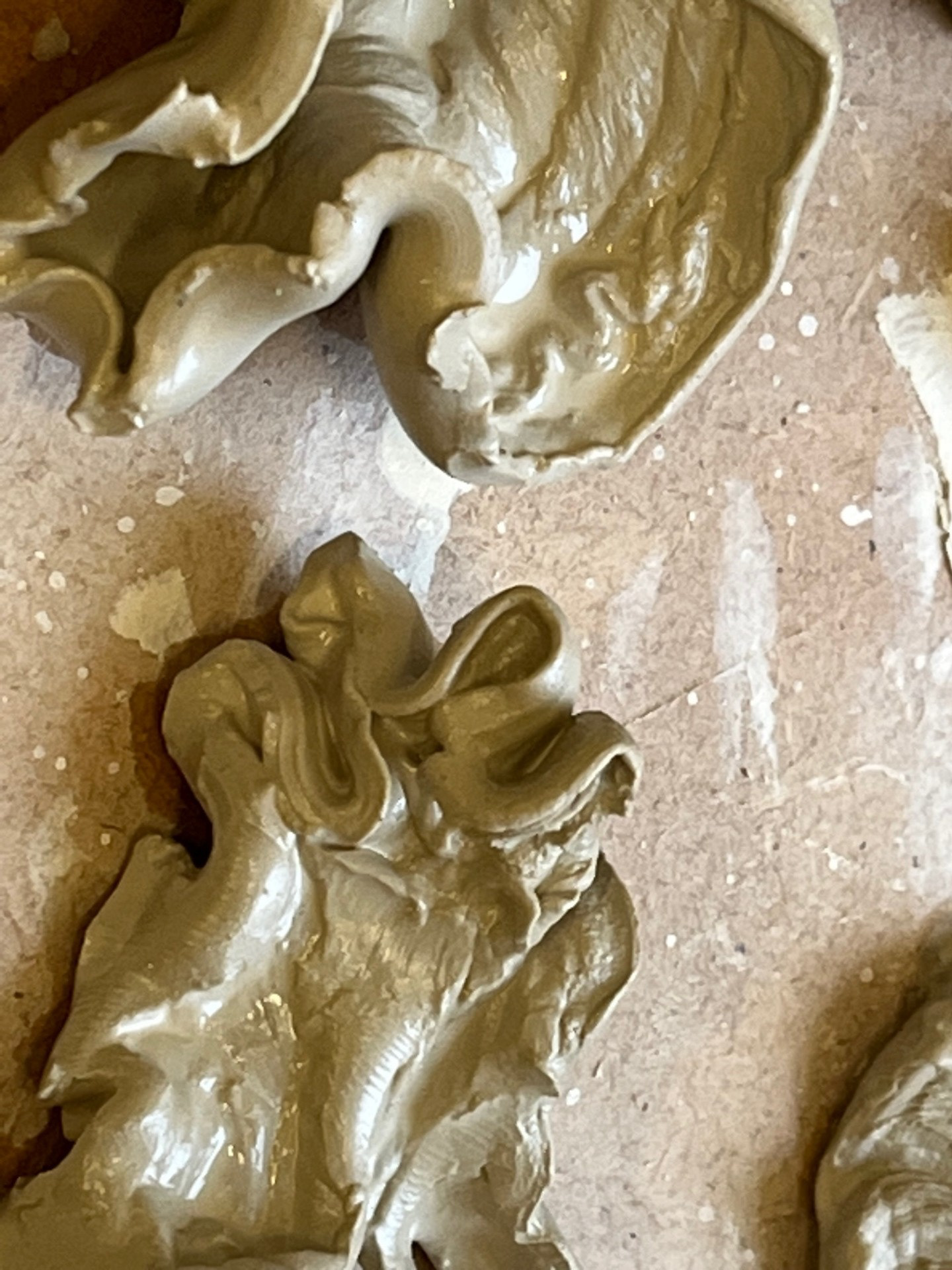


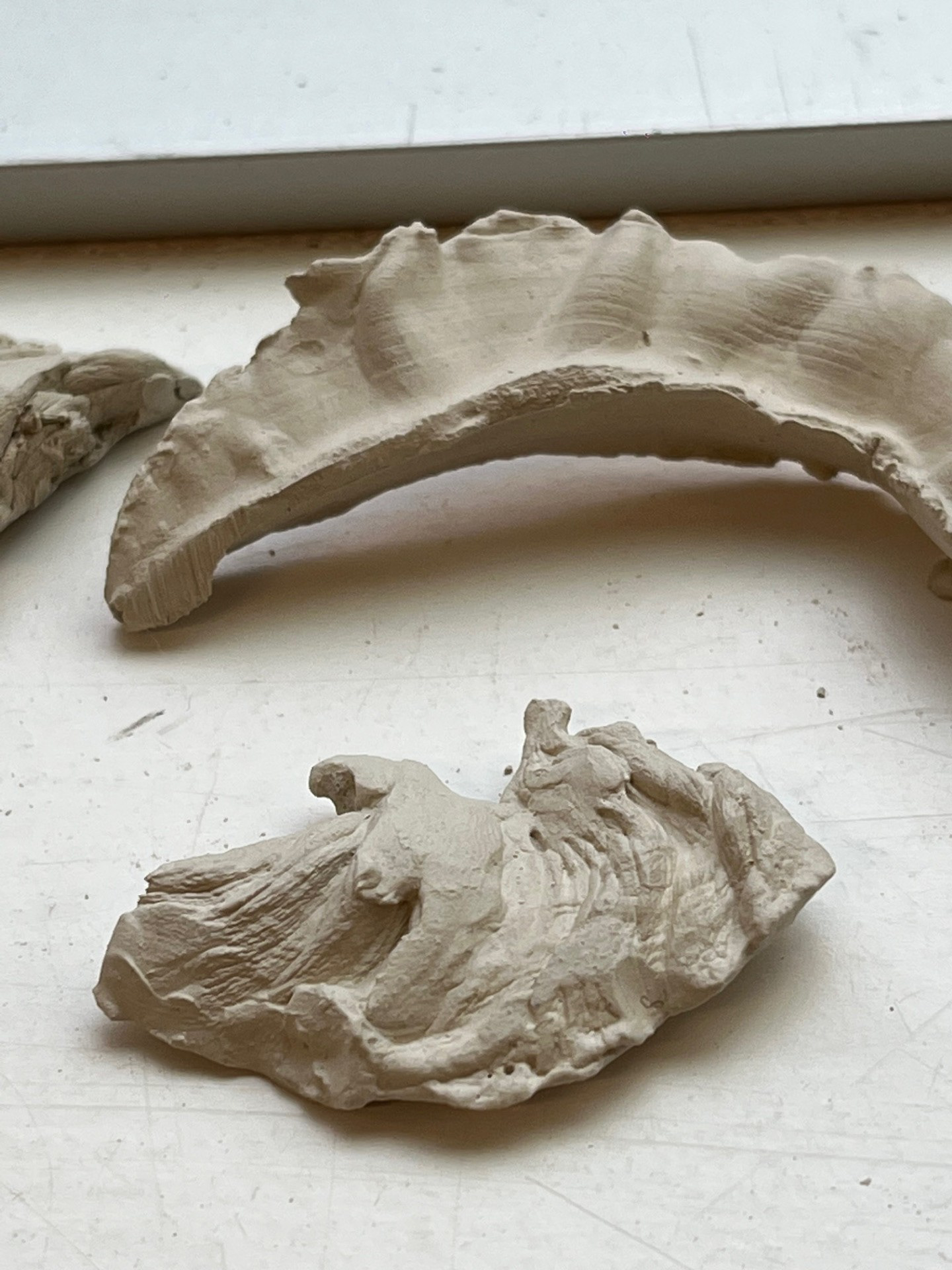
Practical Development and Experimentation:
Purely trying to work on refining the increase in scale - plate made after failed attempt at larger piece.

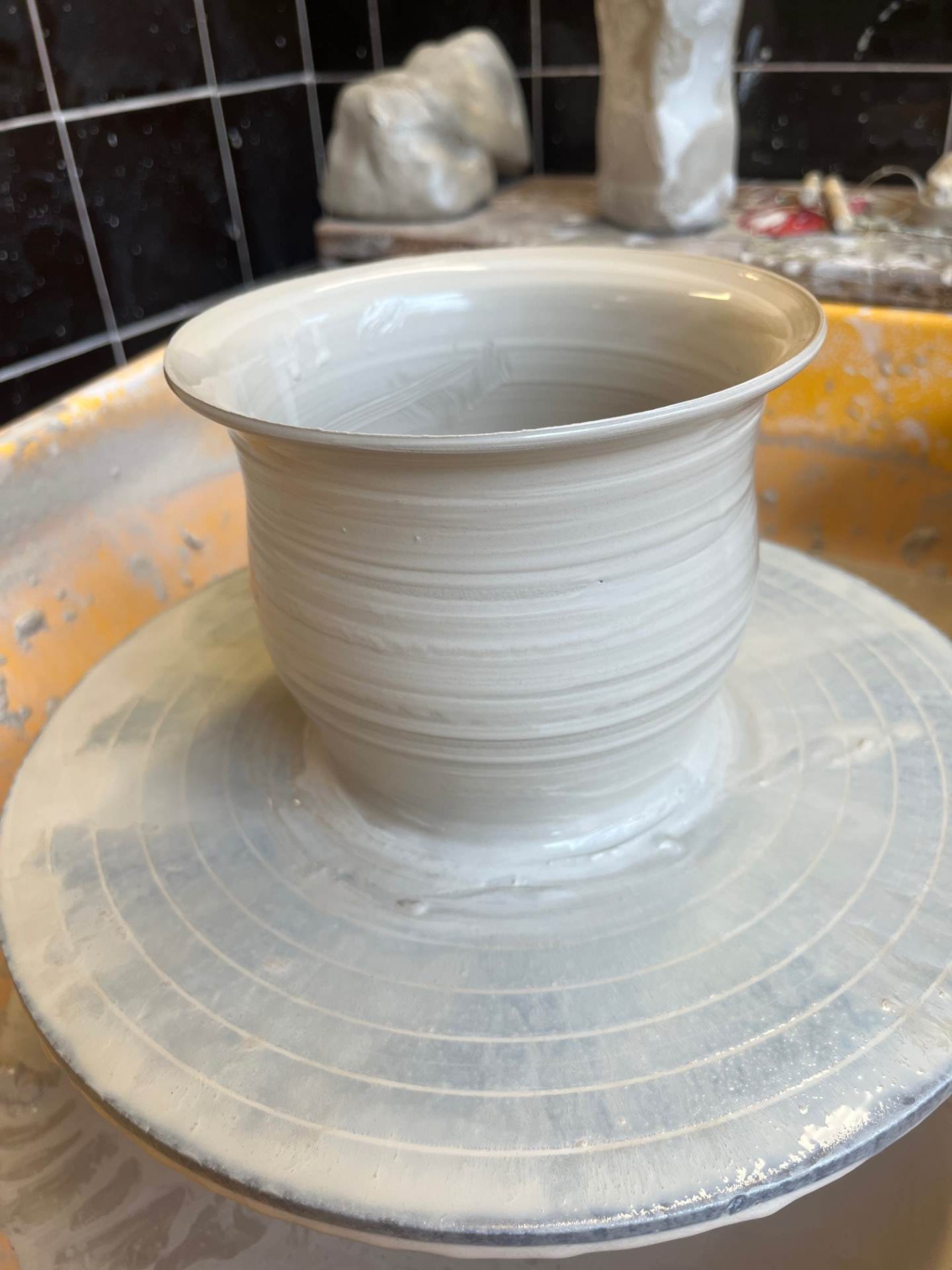
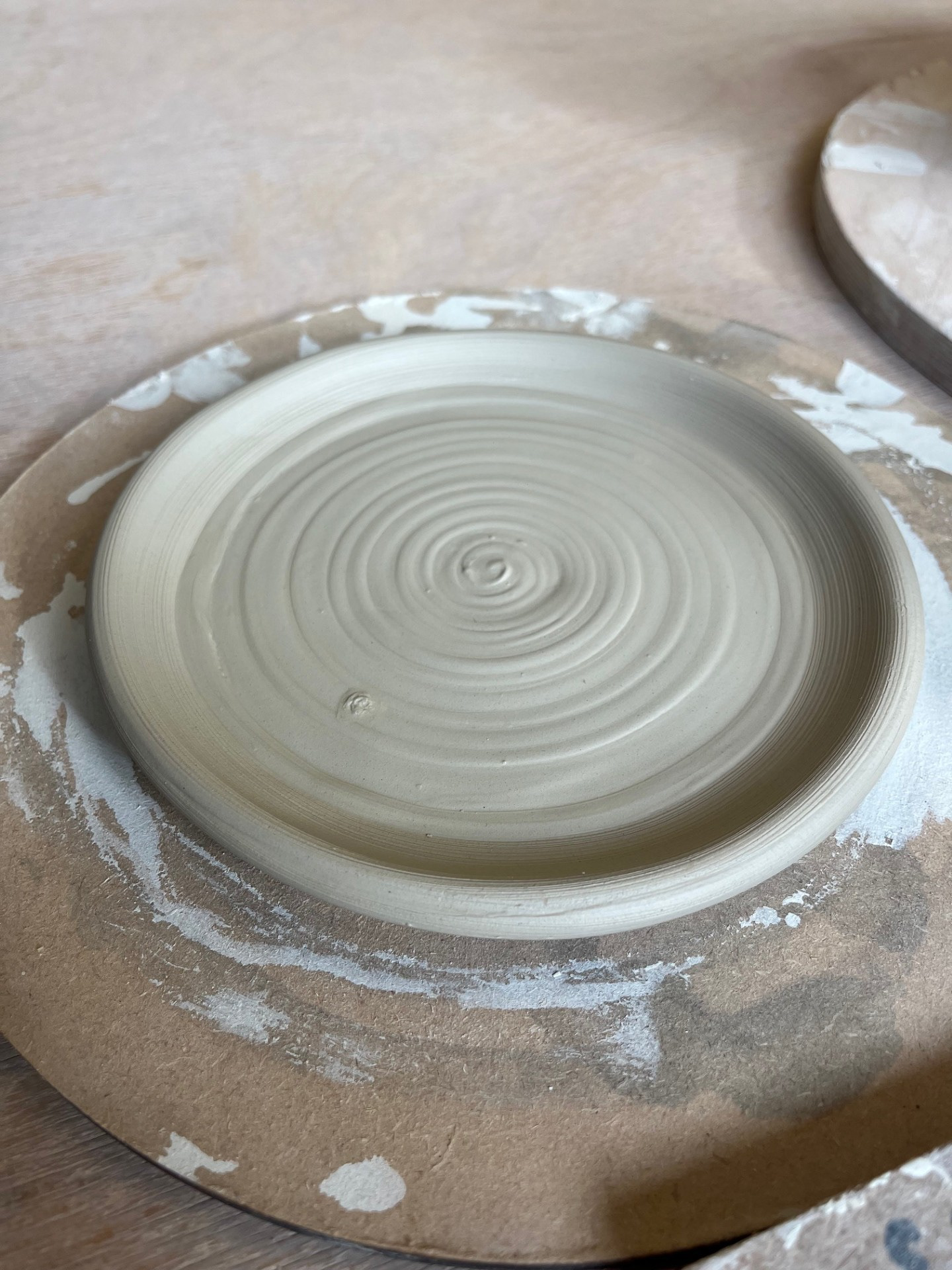
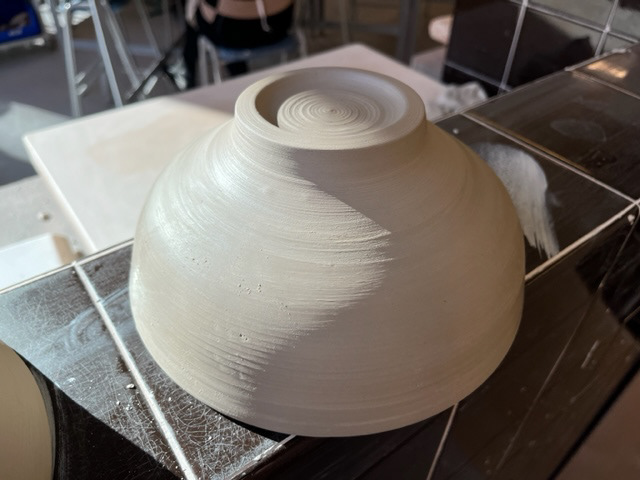

Glaze Testing:
I admire the ability of certain artists to embody movement in their work, creating eye-catching and bold creations that immediately draw the viewer's attention. This approach resonates with my own interests, particularly the pots I presented in my recent work. Inspired by this, I decided to experiment with my own crystalline glaze, which I had already developed, and combine it with other house glazes to see if I could achieve any interesting outcomes. To ensure a successful result, I used old samples for testing, as I wanted to conduct various trials before applying the glazes to any of my actual potential pieces. This process allowed me to explore new possibilities and refine my glazing technique with a focus on achieving unique and visually striking finishes
Outcomes:


Katrina X Black Tenmoku
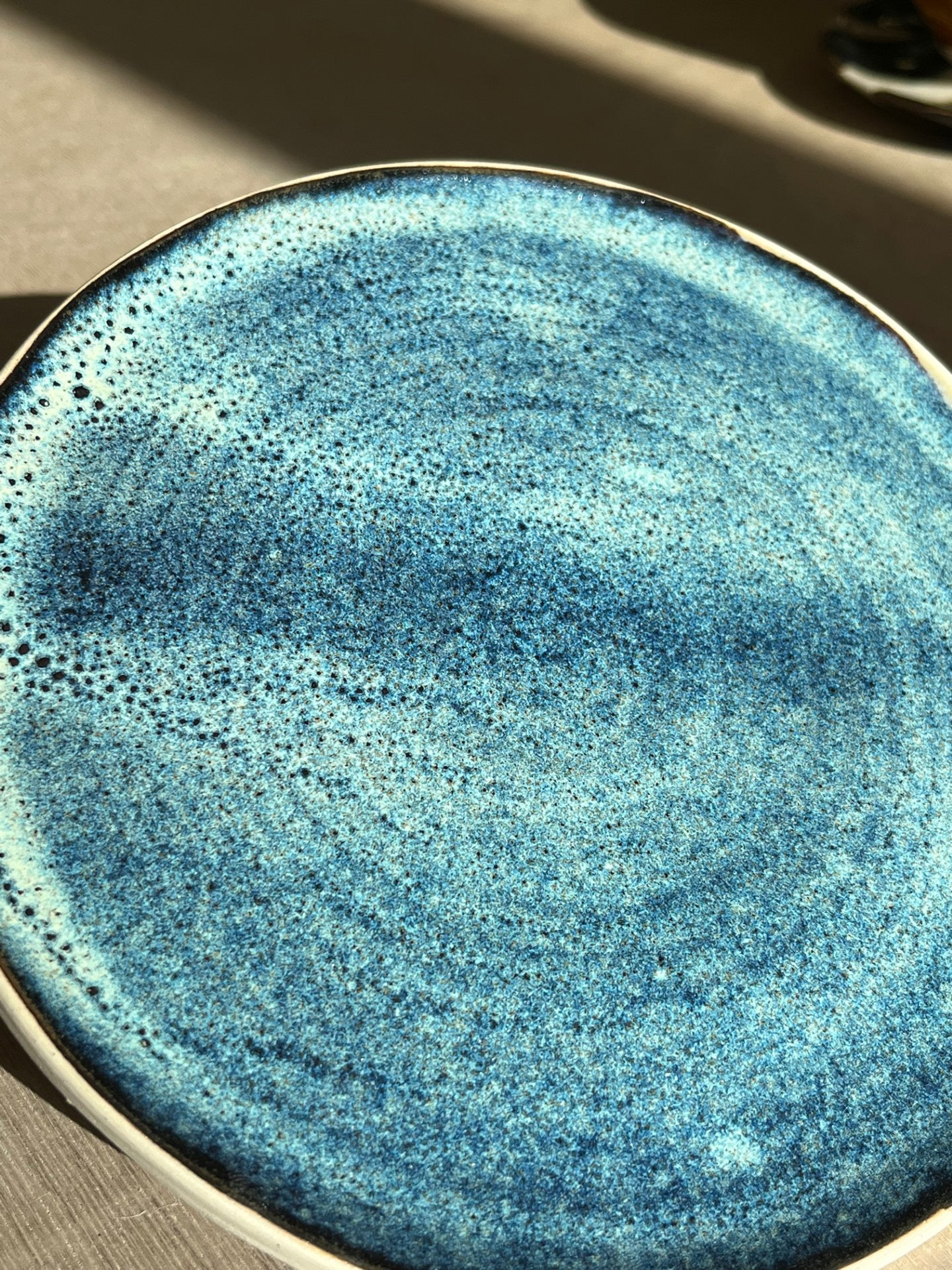
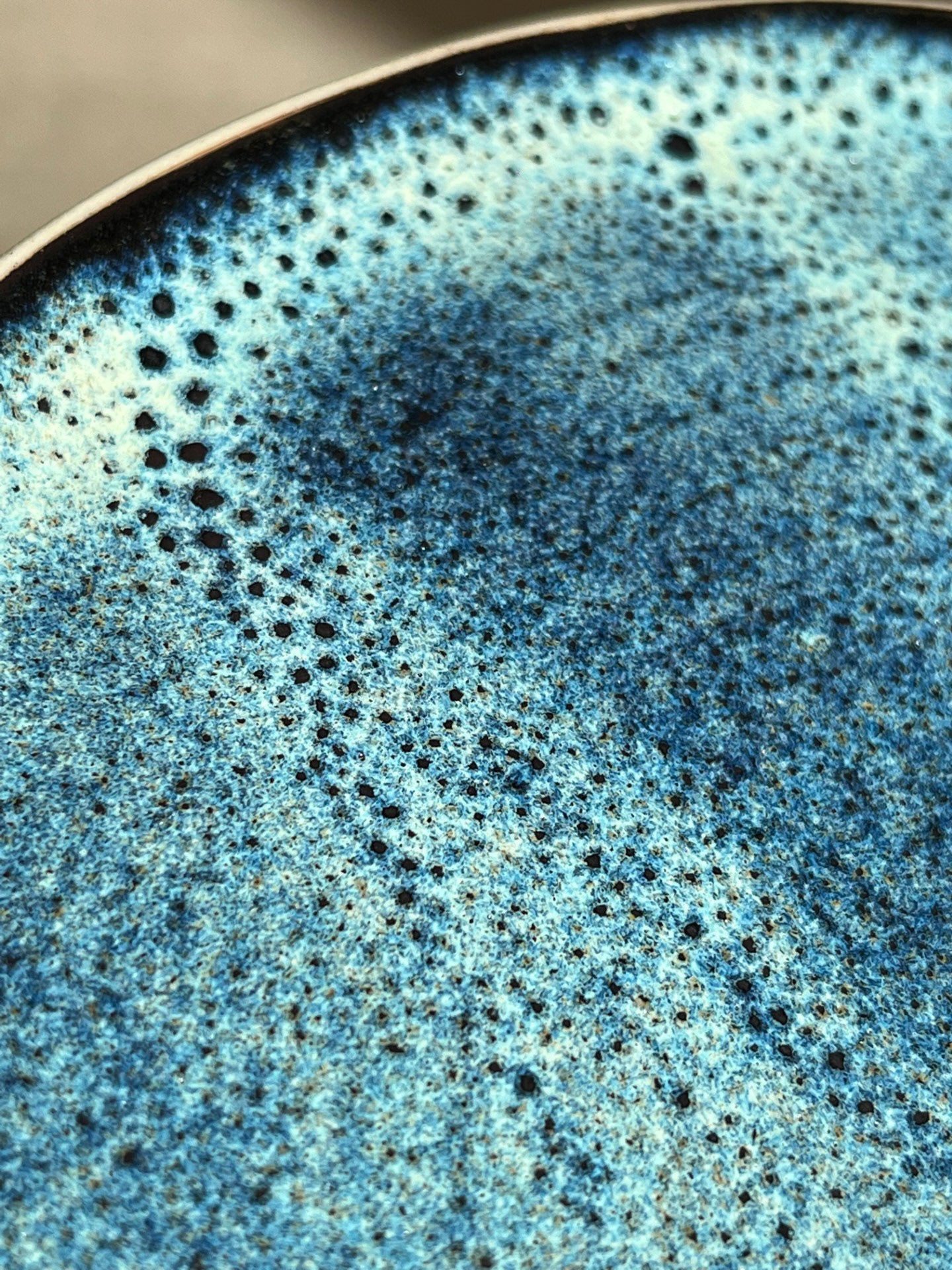
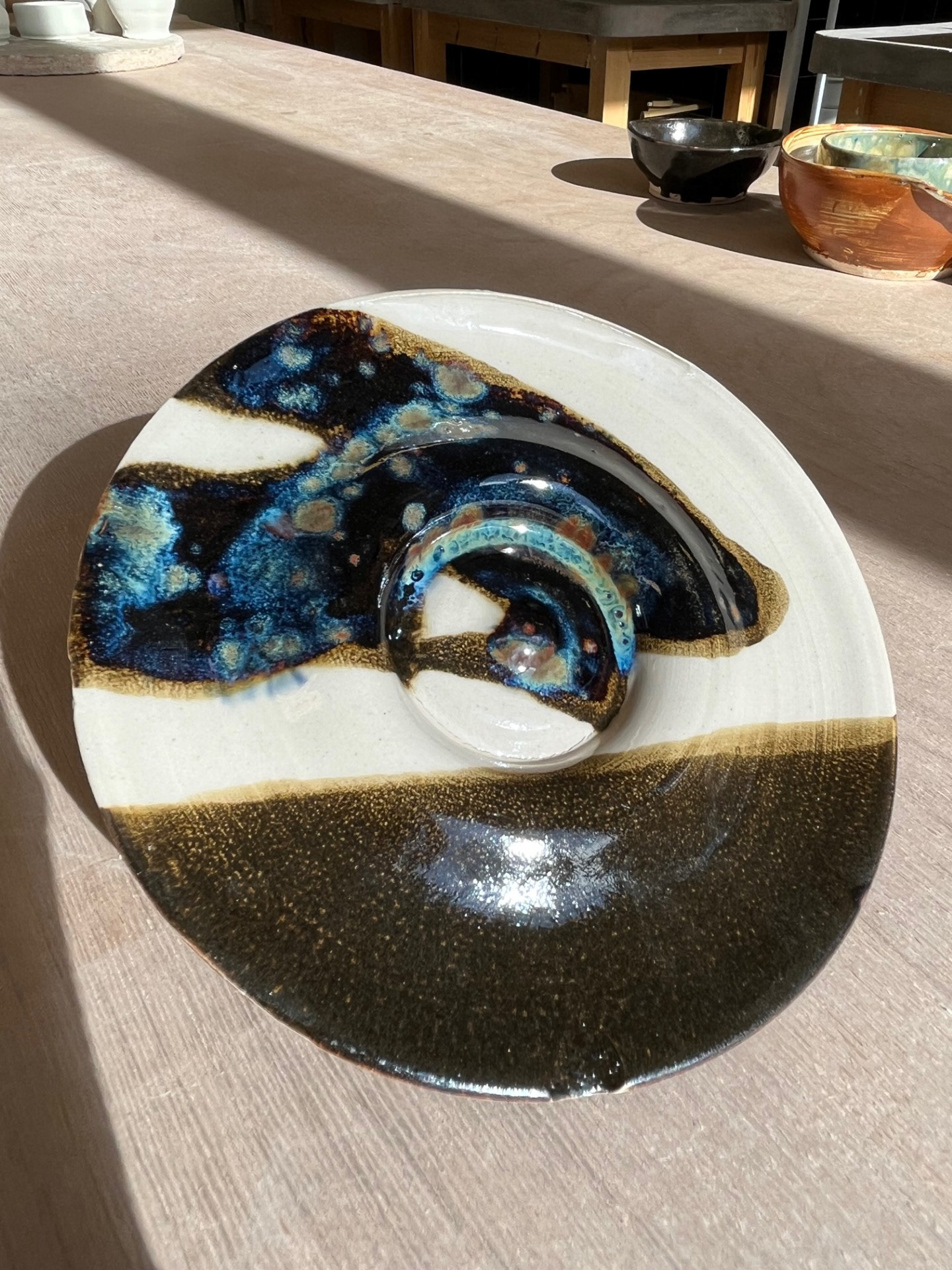
Black Tenmoku X Crystalline Glaze (Mayoco Blue Azure)

Black Tenmoku X Crystalline Glaze (Mayoco Blue Azure)
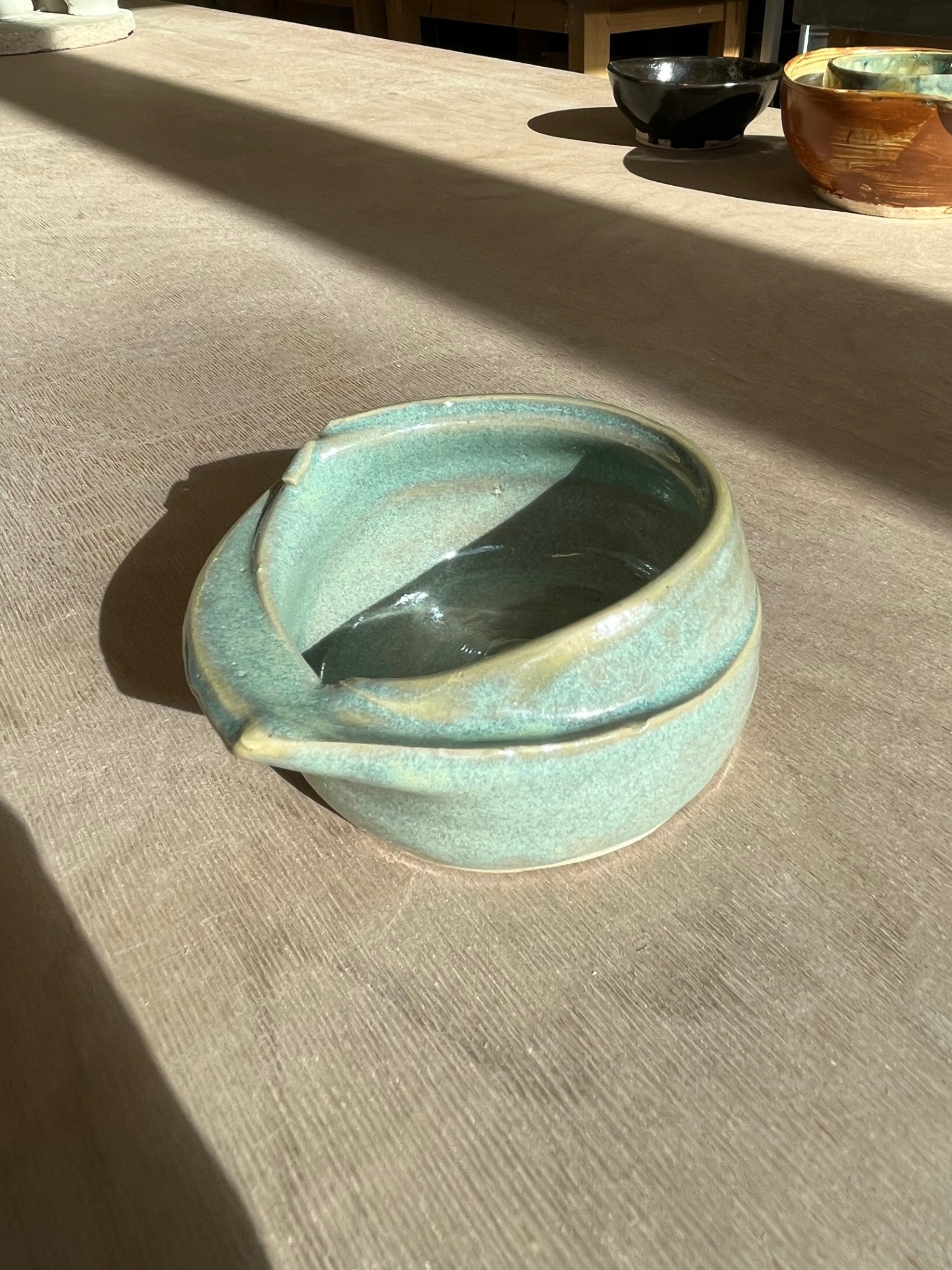
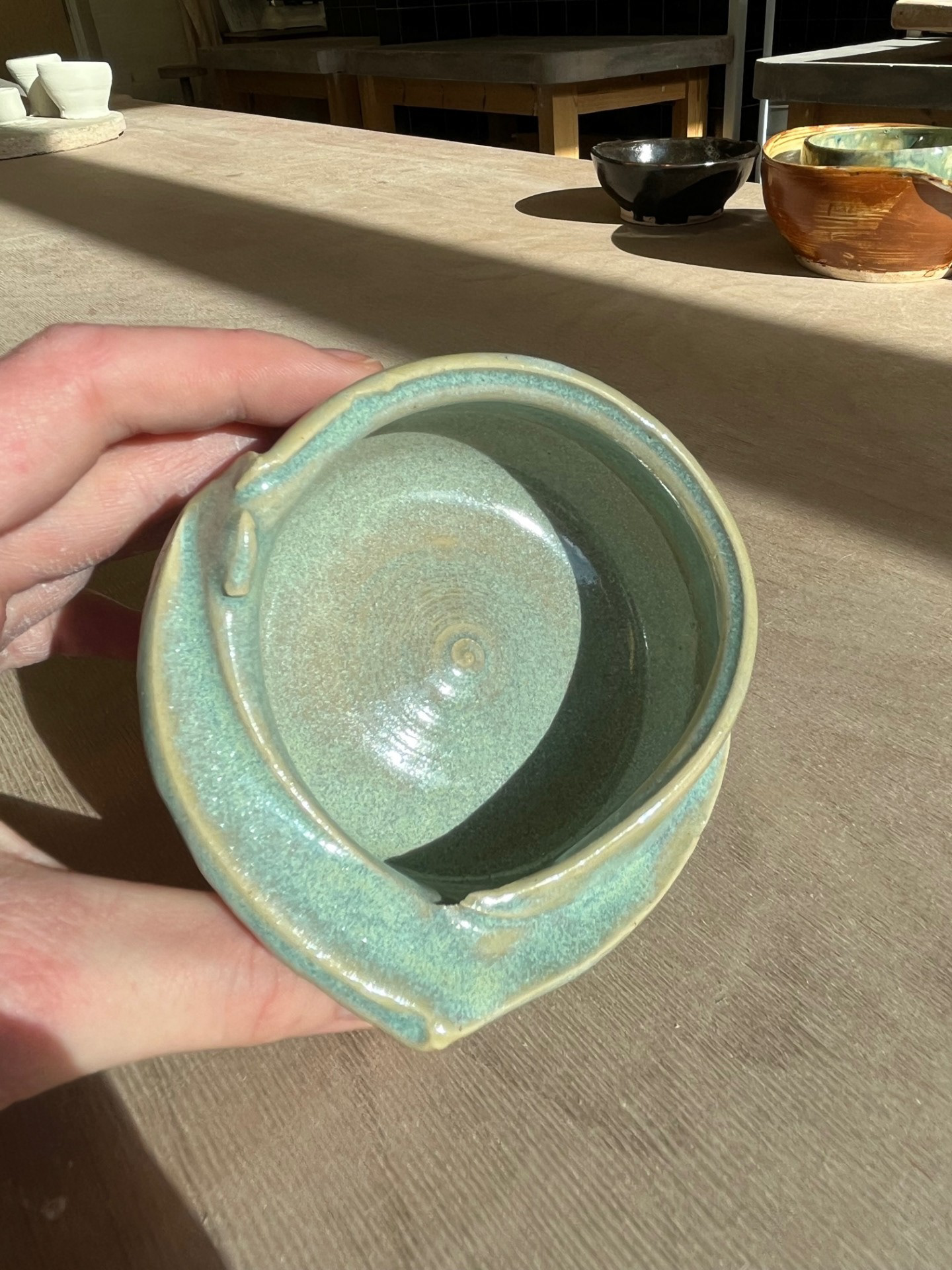

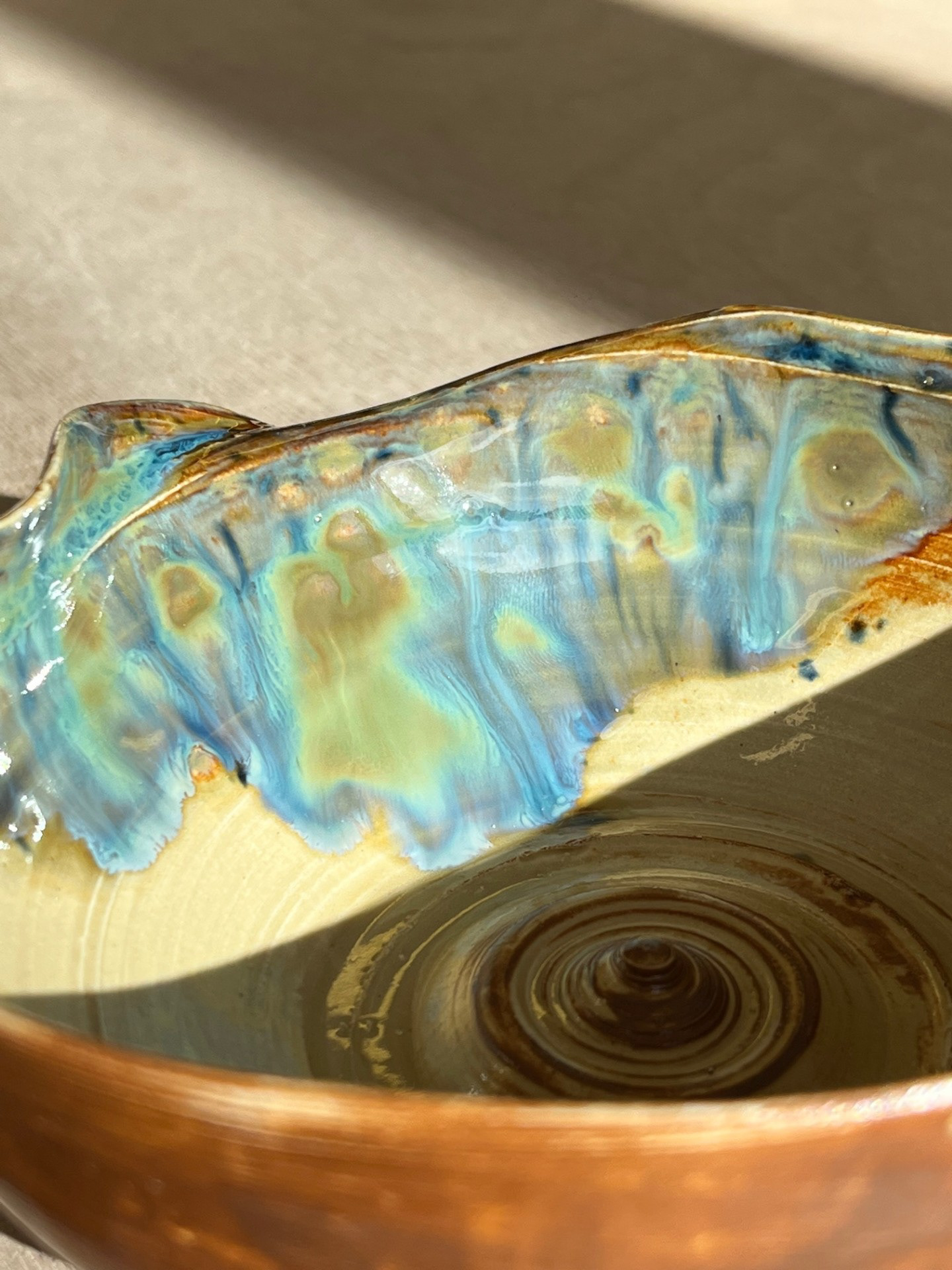
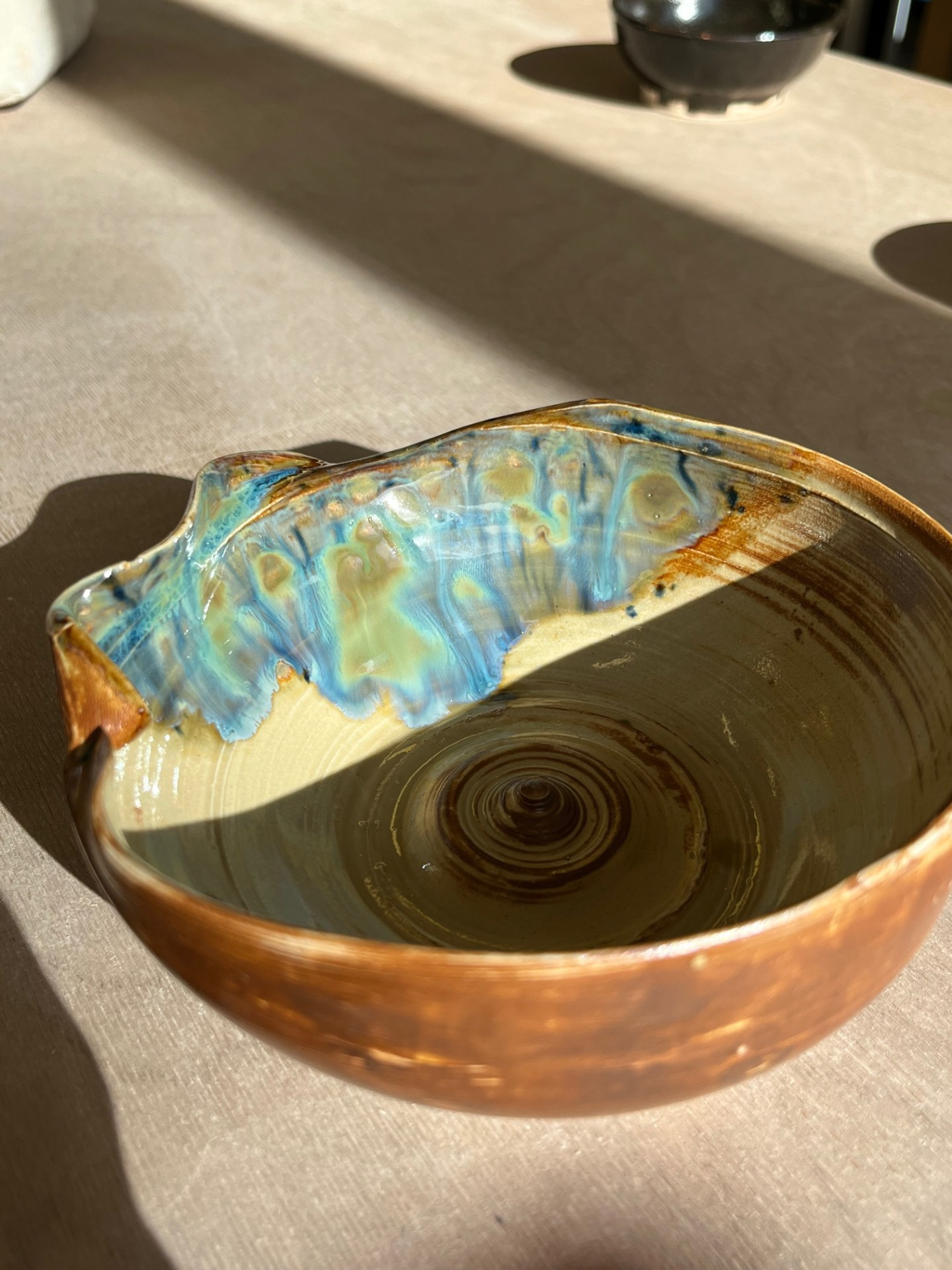
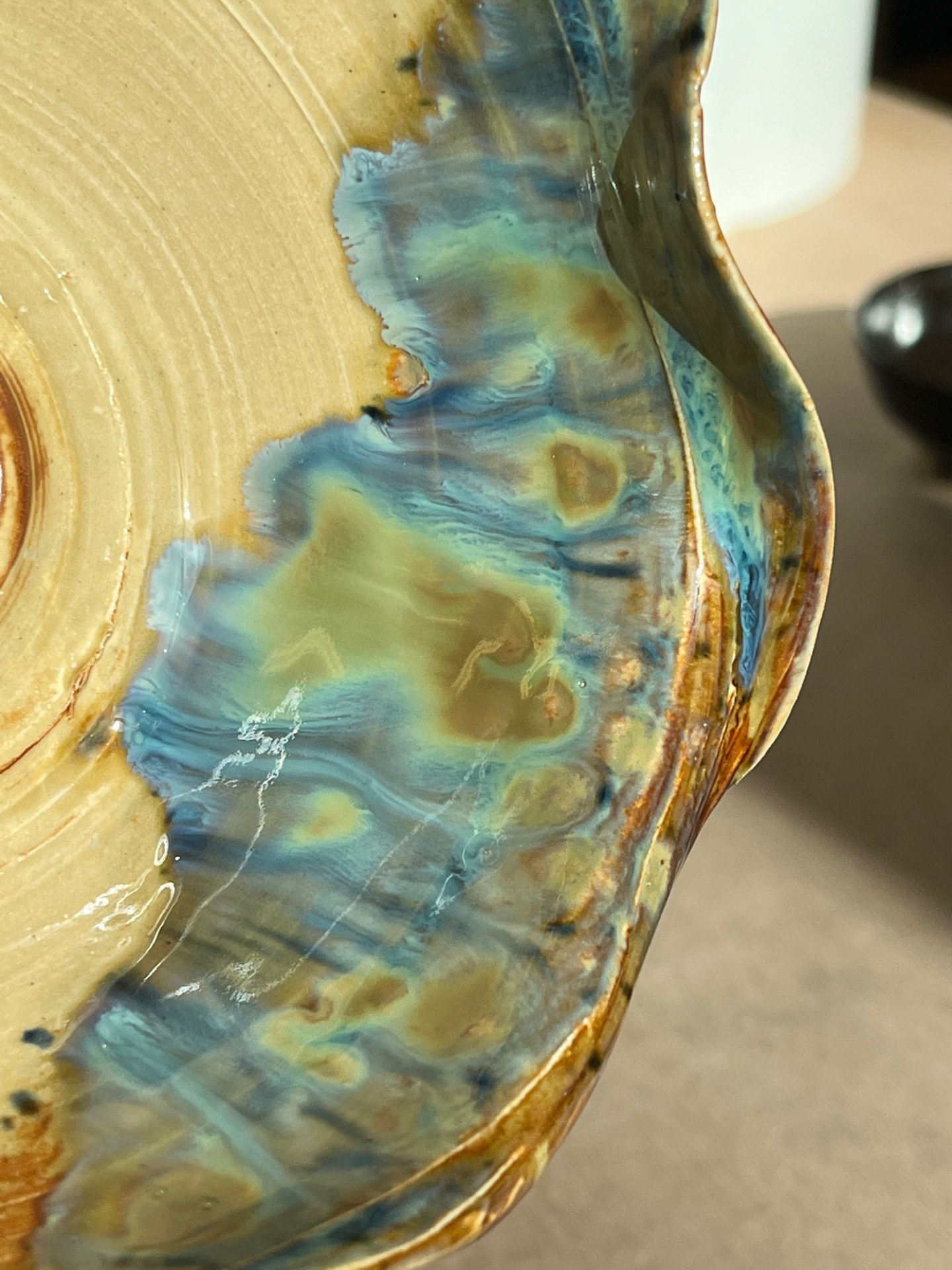
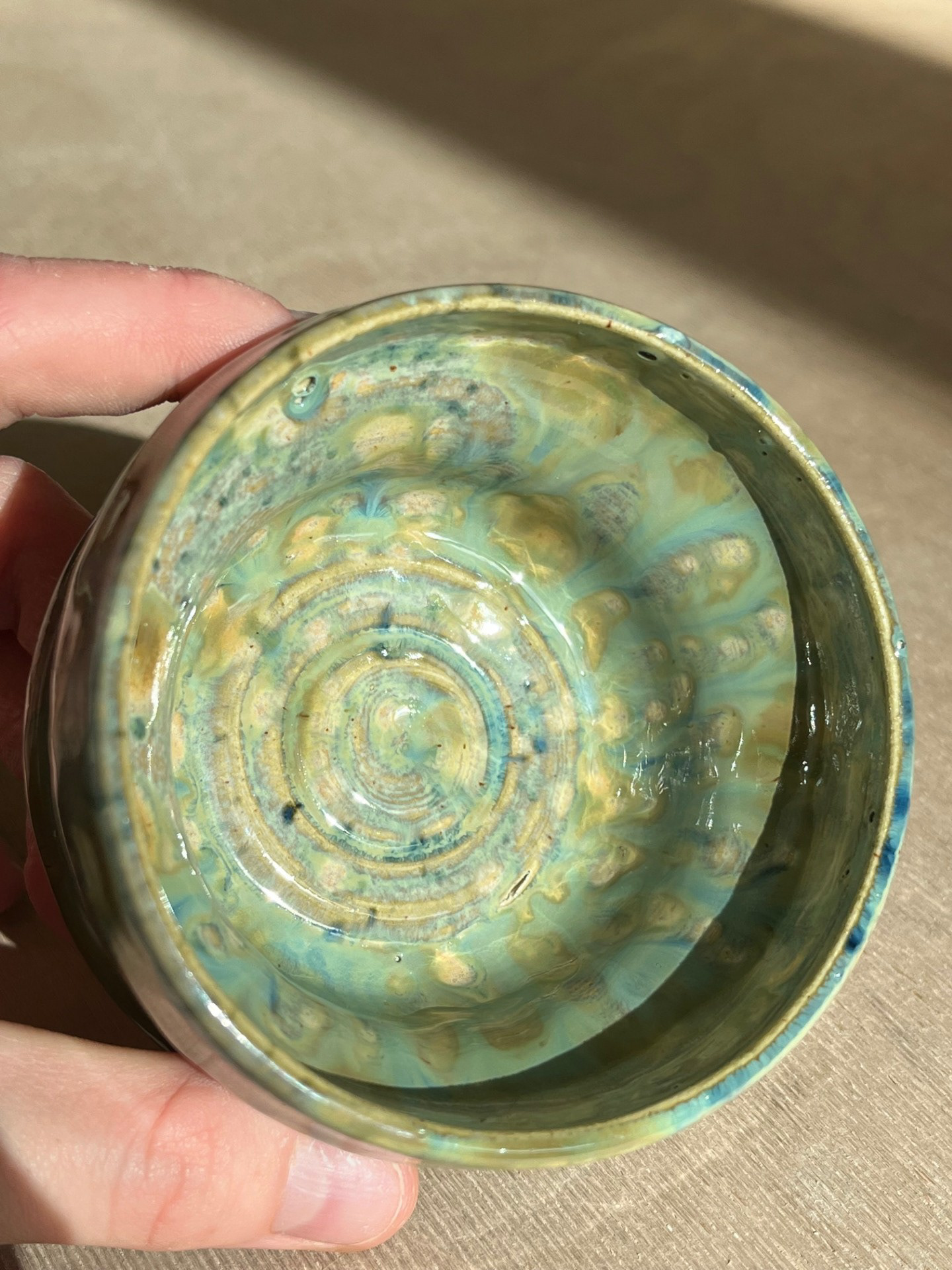

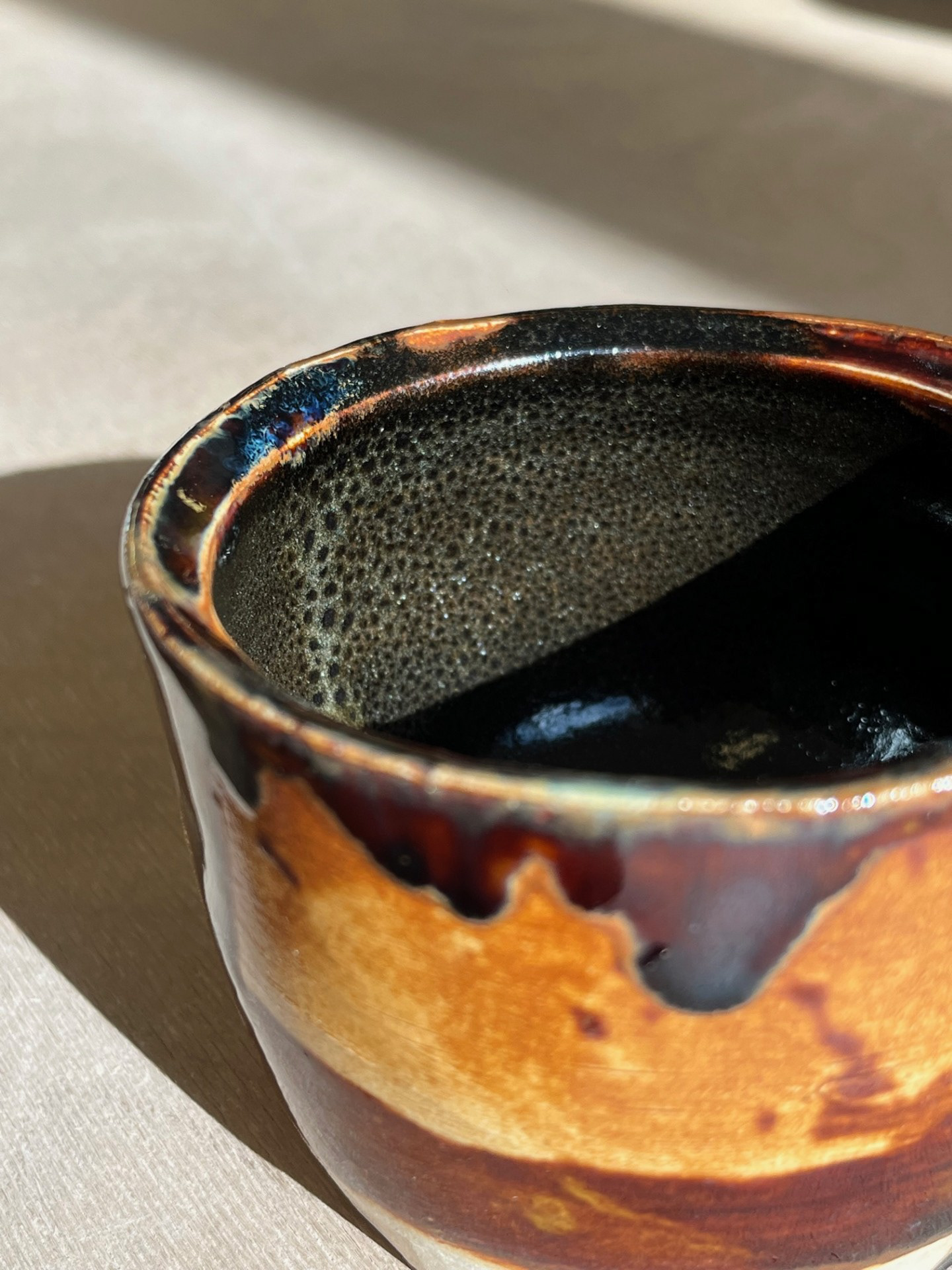

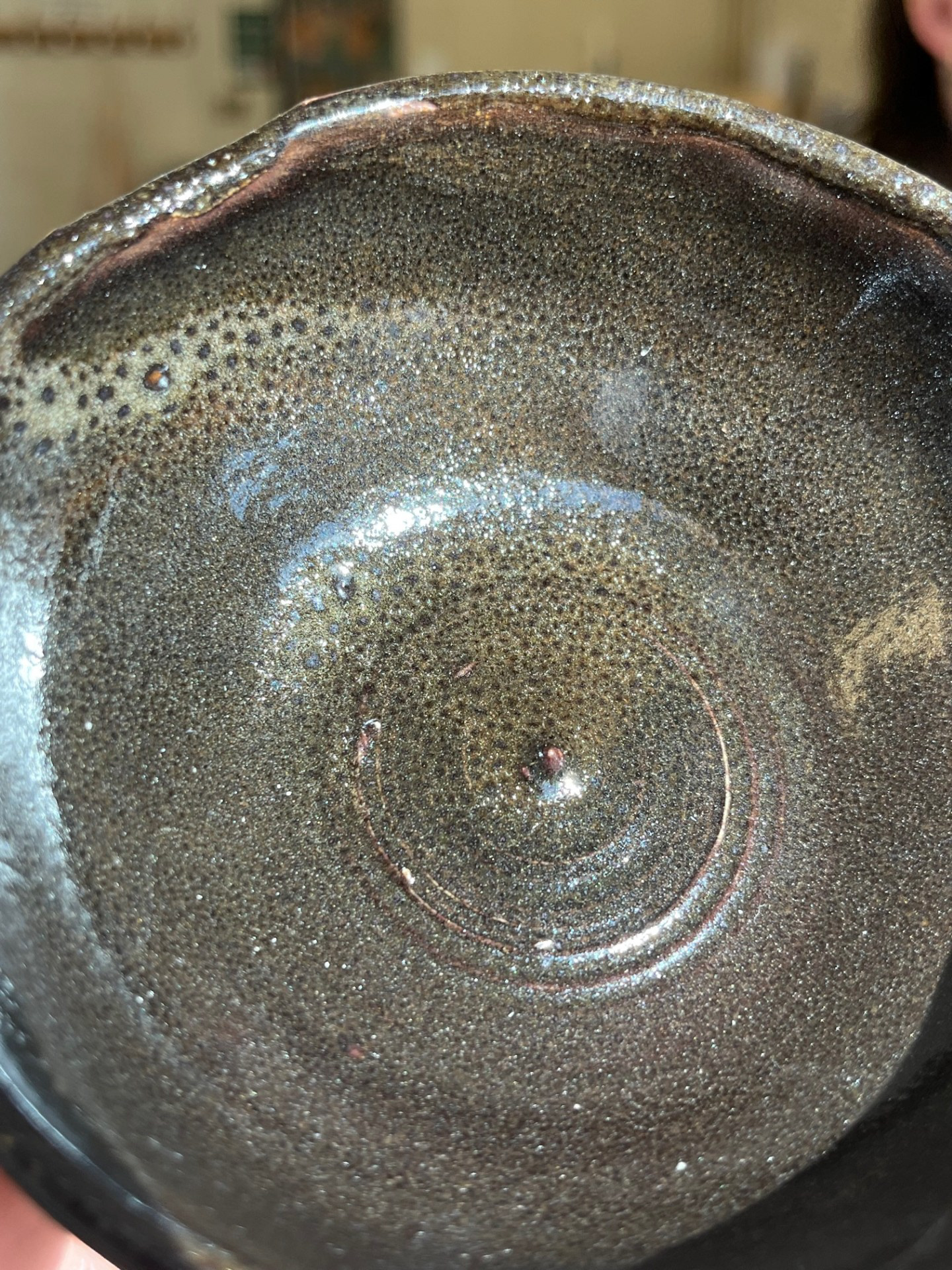
Reflection of Glaze Sampling:
Overall, I am very pleased with the outcome of these glaze samples because I love how bright and colourful they are. Although I had mapped out what I wanted to do going into this, it was still a very experimental process due to the application methods that I was using. And even then, only half of the glaze combinations were predetermined because ethe others were figured out throughout this process. The crystalline glaze on its own isn't very interesting to me, however when combining it with other glazes, such as black tenmoku, there is a beautiful cascading look to it. when the crystalline reacts with the other glazes it created these intense pops of colour that add an intense depth to the surface of the piece. It gives you something to look deeper into and allows the consumer to almost delve below the surface of the vessel. Like Katrina as a glaze, however limited amount as it was mixed by a student and the recipe is unknown. This means that I should only use for testing glaze application methods as it cannot be relied on for a final piece. Now that I know the capabilities of these glazes and how they effect each other, I intend to further experiment with application methods and try out more glazes so that I can establish a more sustainable and refined method of glazing for my pieces.
Practical Experimentation:
During sampling and making process, I had the idea to apply slip to outside of pot so that I could experiment with and explore surface exploration. I followed this up by completing a sketch of the idea so that i could develop it further. See below for sketch:
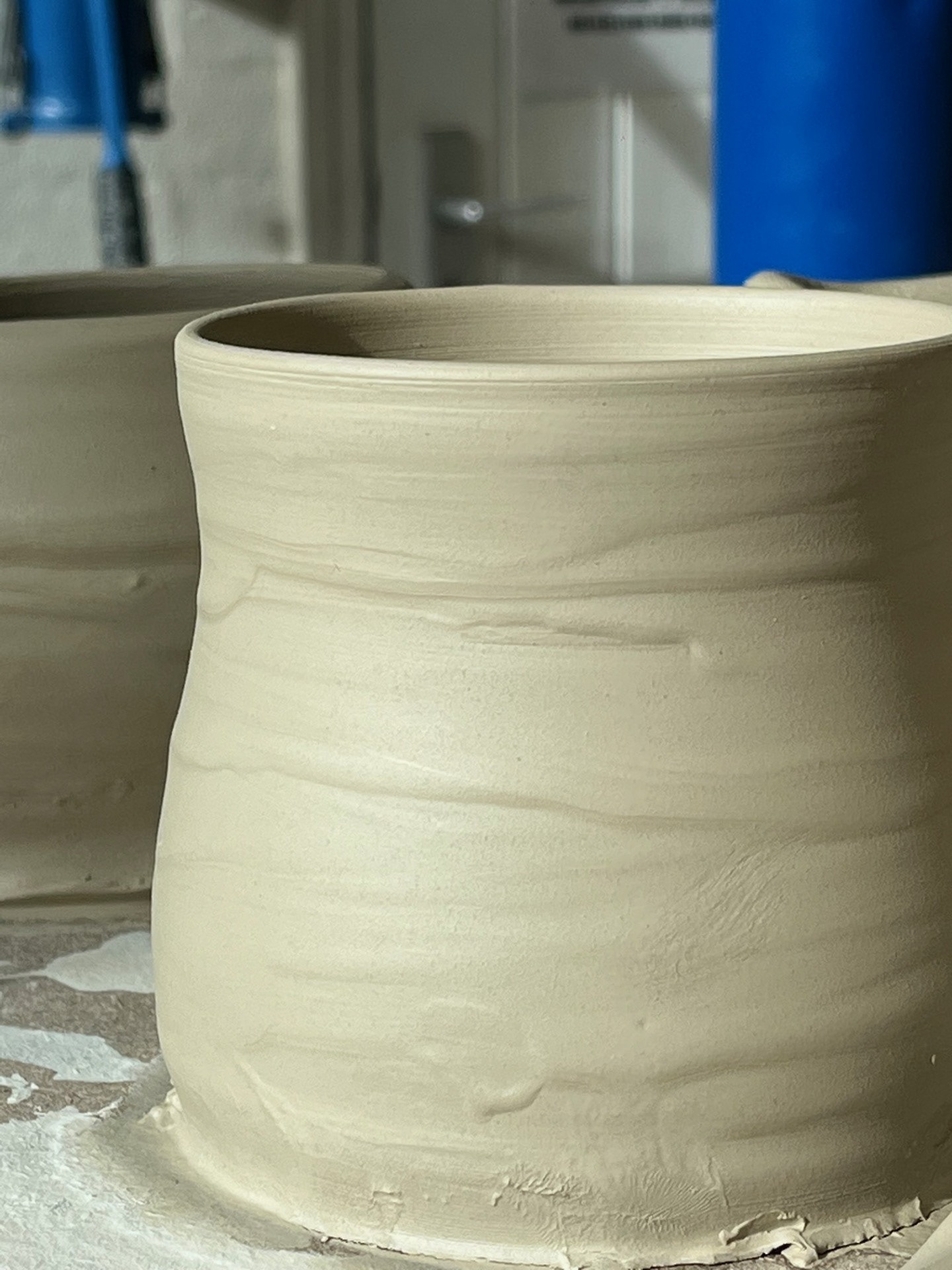
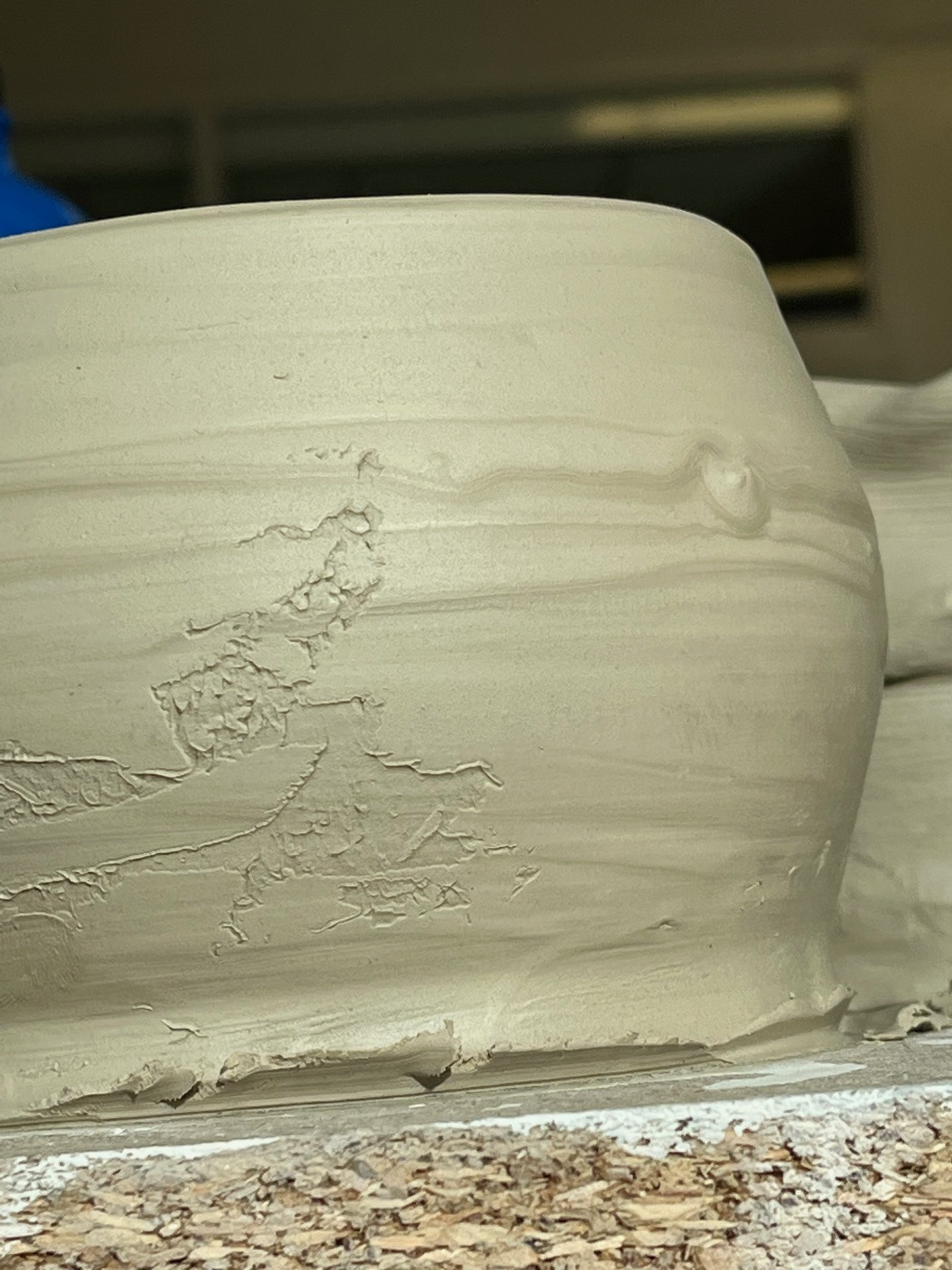

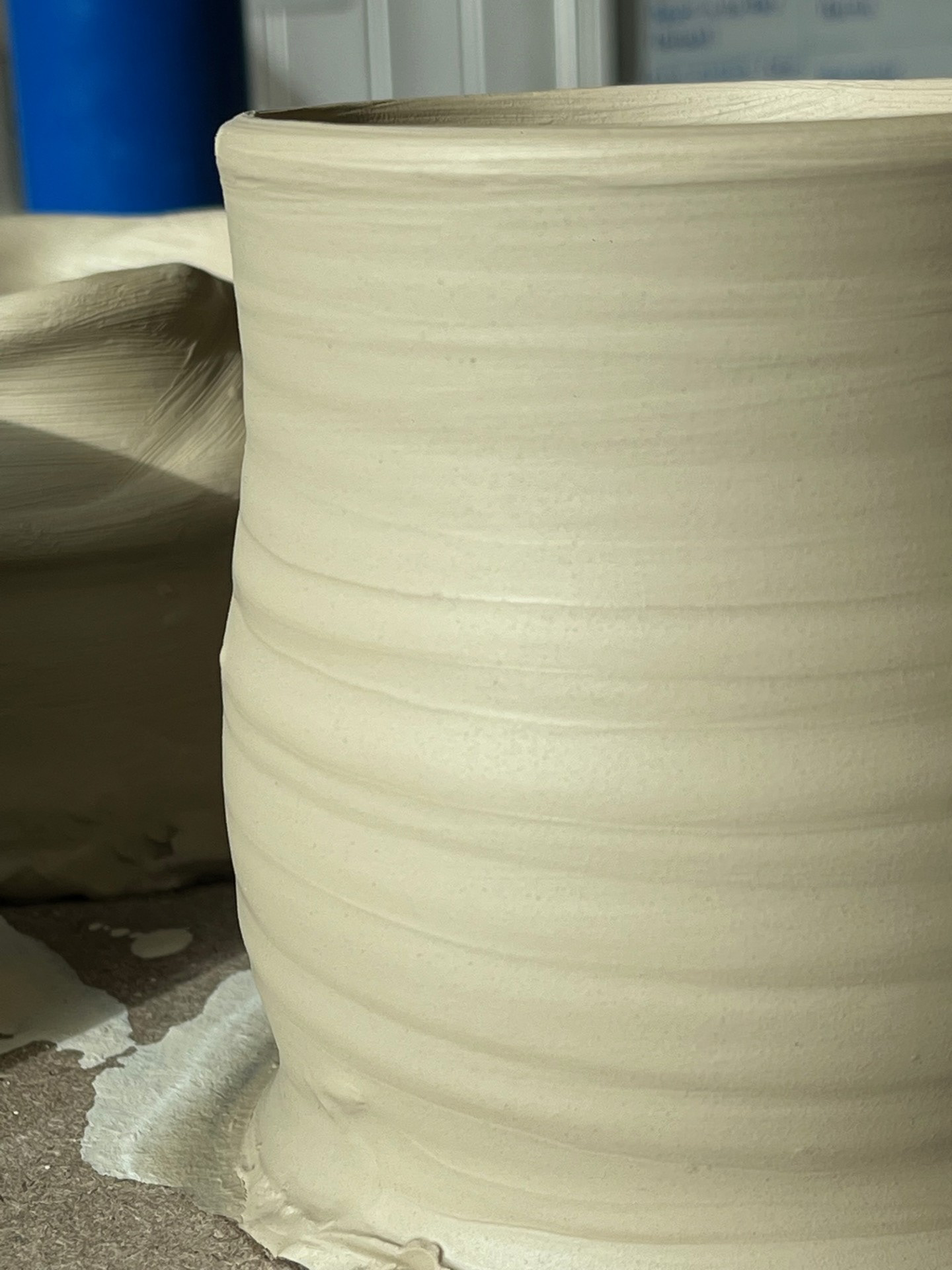
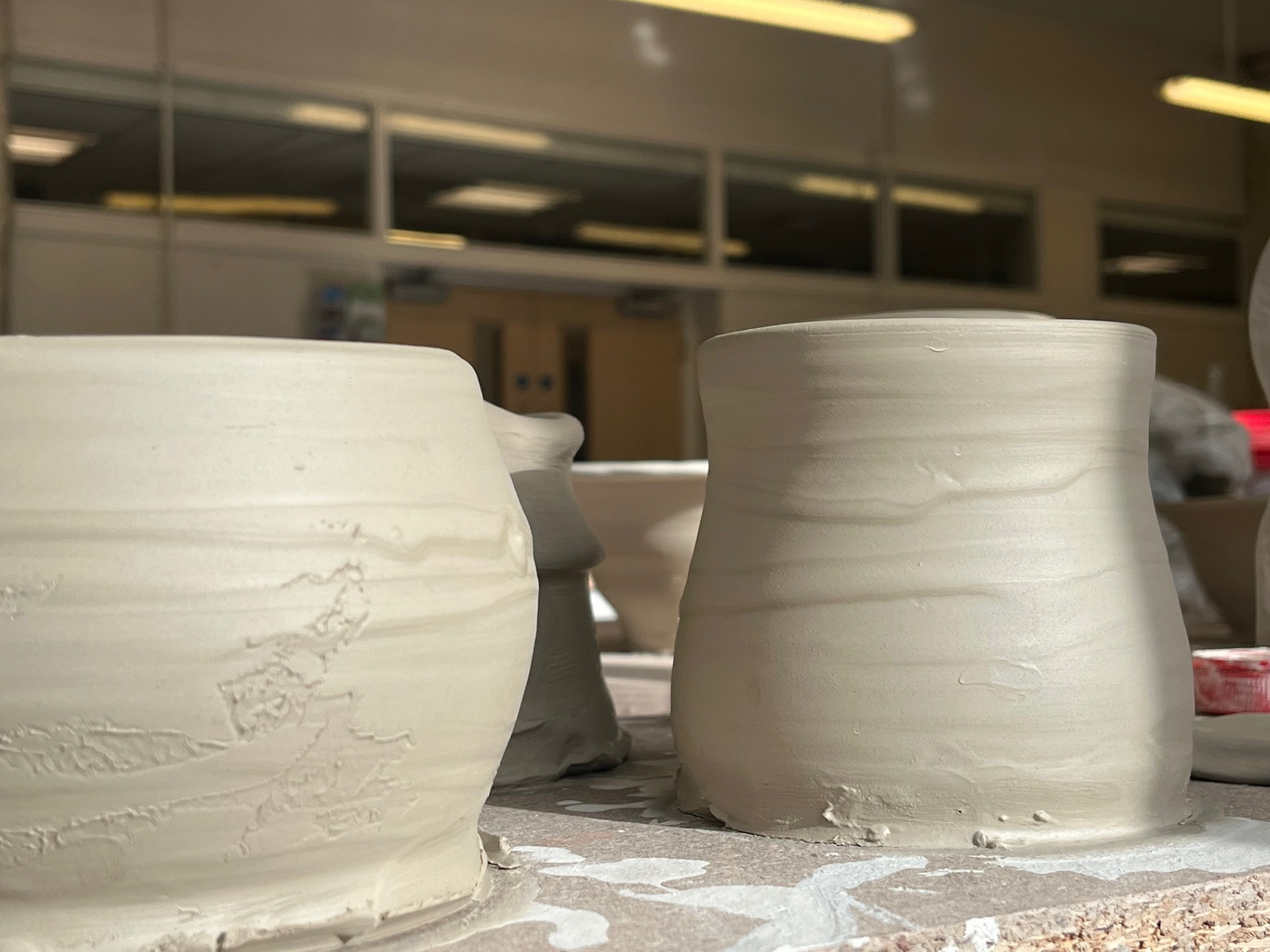
Reflection
In regards to the aims, I think that I achieved my goal of increasing scale. Although the pieces that I created weren't massively larger in scale compared to my previous work, they were much more consistent and refined pieces so overall I am very happy with them. For this sample batch, I decided to add pre mixed slip to the surface of my piece once I threw it and although it made a lovely pattern on the surface, I think that next time I would like to see what the slip looks like on a piece that is leather hard to see if it changes the outcome.
After adding the slip to the surface I left the pieces overnight to dry. When I came back in the morning the plastic sheet had touched the surface of one of the pots and left natural marks. At first I was gutted however after looking at it a bit longer I realised that I quite liked it! I liked it because it not only shows the contrast between the refined and the unrefined but it shows that natural marks of the process. I like it because it shows the journey of not only the pot but the maker.
Going forward, I think that I would definitely like to investigate other elements or components that I could add that represent process as well as personal marks of the maker. For example, I could potentially add finger marks somewhere of the pieces. I like this idea because it adds personability and shows that the pieces were made by a person and not a machine. The final thing that I would really like to investigate further is the contrast of the elegant design created by the slip and the harsh disturbances on the surface. Implementing and representing that idea of contrasting elements in life.
Spray Glazing Pieces
I wanted to experiment with spraying the glaze onto my pieces because previously I have had an issue with glaze application. My overall aim for this is to potentially refine my practice so that I can become more consistent with my finishing methods as this adds an element of reliability to my work.
I started the process by taping the bottom of the pieces with masking tape so that they would stay protected. The next thing that I did, as recommended by the technician, Was glaze the inside of the piece first. He recommended this because for these specific vessels, it would be difficult to get an even coating. If i were to continue doing this process, I think that I would want to focus on refining my technique so that it is a lot more consistent for future.
See below for pieces once sprayed:
Glazing Potential Samples for GNCCF
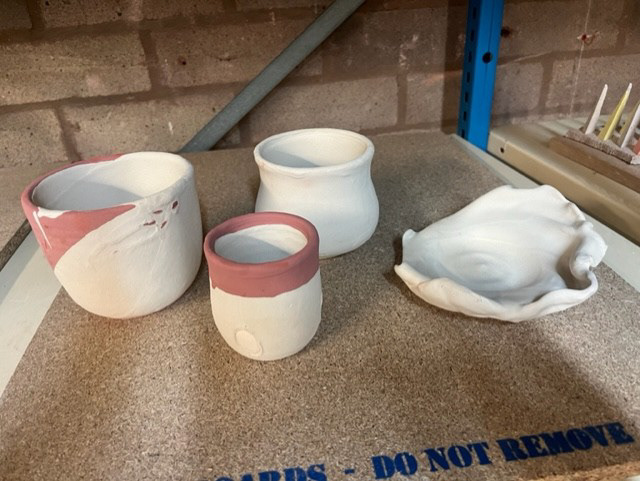
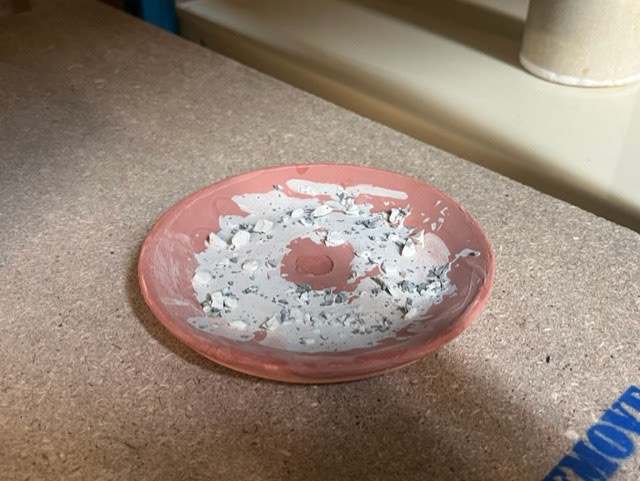
Outcomes:
Black Tenmoku X Katrina (unknown glaze) Samples:
For the sample above, I wanted to experiment with leaving my finger marks in the surface of the glaze. I previously highlighted this as a point of interest
Black Tenmoku X Blue Azure Crystalline Glaze Samples:
Artist Research
I’ve been looking into process-based ceramists because I deeply enjoy the ideation that comes through the process itself. For me, the journey of creation is as important as the final piece, and I find great inspiration in how process-driven artists explore new techniques and approaches. Additionally, I’m drawn to designers who incorporate organic influences into their work, as I am fascinated by how natural forms and textures can inspire both the aesthetic and the tactile qualities of ceramics. This blend of process and organic inspiration aligns with my own practice, allowing me to connect with a broader creative perspective while exploring new possibilities in my making.


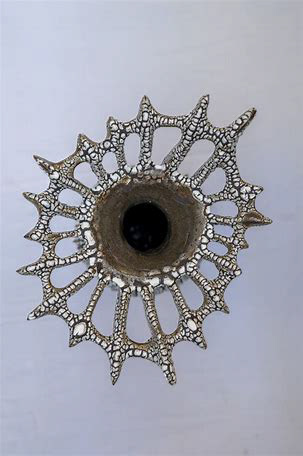

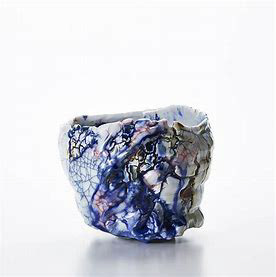
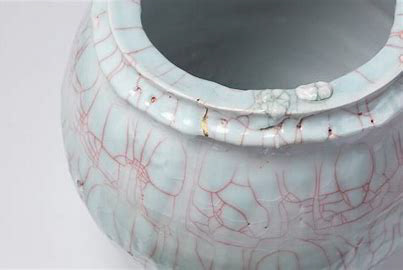
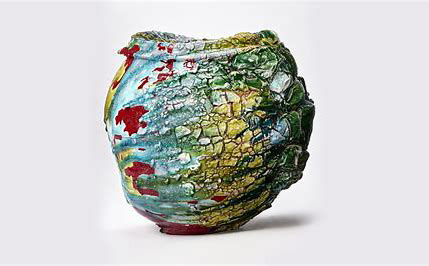

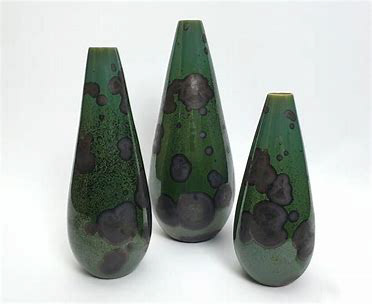
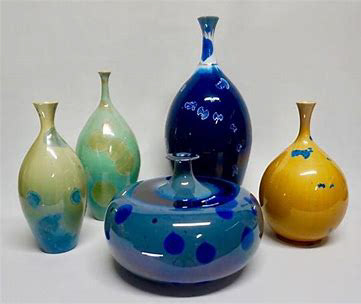
Idea Development: Initial Brainstorm
